United We Stand


Parallel Paths?
MIDEI CHODESH
Rabbi Shmuel Goldin
Page 20
B'CHODSHO

The Song of Yerushalayim
Ricka Razel
Page 70



Rabbi Shmuel Goldin
Page 20

The Song of Yerushalayim
Ricka Razel
Page 70
With the month of Nissan upon us, we return to the story of our nation’s birth, as Moshe rises to leadership and the exodus again unfolds.
Moshe’s yearly introduction in the text, however, is cause for pause. For some reason, the Torah chooses to introduce the birth of the greatest leader we have ever knownin the most innocuous way possible.
“And a man went from the House of Levi and he took a daughter of Levi. And the woman conceived and gave birth to a son.”
Questions abound:
Why does the Torah depart from its usual mode of describing an individual’s birth?
What does the seemingly superfluous phrase “and a man went…” indicate?
Why does the Torah omit any mention of Moshe’s lineage- to the point where even the names of his parents are deliberately omitted?
Above all, is this any way to introduce a hero?
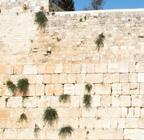


Compounding these questions is the fact that the omitted information concerning Moshe’s lineage is ultimately included in the
BY RABBI SHMUEL Faculty, OU Israel Rabbi Emeritus, Torah, Englewood
Parsha that follows (why given at that particular of another article).
If the information eage is eventually shared, the first place?
Numerous commentaries sues before us…
Working within the Ibn Ezra suggests that, birth, the Israelites Egypt. Through the went,” the Torah is simply Amram “went” from other in order to marry
Perhaps the Ibn Ezra that Yosef’s plan for Egypt has, by this point, inally meant to remain Egyptians in the land ites are assimilating
The Ramban, however, Ibn Ezra’s interpretation, rah would have no reason cerning a journey taken city to another. Instead, maintains lalachet, “to go,” is when a new and difficult be taken. By stating, man went,” the Torah ram’s courageous willingness spite of Pharaoh’s harsh

The Ramban’s approach
Rabbi Avi
Praying for
Rabbi Moshe Hauer
Aliya-by-Aliya Sedra
Rabbi Reuven Tradburks
“All Roads Lead to the Beit Midrash”
Rabbi Dr. Tzvi Hersh
Paths
Rabbi Shmuel
The Limits of the Free Market
Rabbi Lord Jonathan Sacks zt"l
Probing the Prophets
Rabbi Nachman Winkler
Shmita – Insights on the Eighth Year
Rabbi Shalom Rosner
Envy of the Tzadikim
Rabbi
Chadash in
Simchat Shmuel
When the Land Cries Family
Rabbi Moshe Taragin
Held on All Sides
Rebbetzin Dr. Adina Shmidman
Yerushalayim: Of Hopes and Dreams
Rabbi Aaron Goldscheider
Keeping Bread on the Table
Rabbi Daniel Mann
Jerusalem of Gold Shoshana Judelman
To Daven at the Kotel
Rebbetzin Abby Lerner
The Song of Yerushalayim Ricka Razel
Village Aleeza Ben Shalom - Shagririm Balev
Y-Files Comic
JLIC -The Power of Community and Renewal
Brown
Elchanan Perez // AviNoam Vaknin See TorahTidbits.com > Individual Articles for this weeks Dvar Torah by: Rabbi Chanoch Yeres
Yom Yerushalayim is celebrated Sunday night May 25 and Monday May 26
Rosh Chodesh Sivan is on Wednesday May 28

COVER IMAGE Photographed by Ari Ellen
We live in Beit Shemesh, and this photo was taken at the Tayelet in Jerusalem on Yom Yerushalayim. Each year, we attend the OU’s musical Shacharit at the Tayelet in honor of the day. It’s a meaningful and uplifting experience, as we join in tefilla overlooking a unified Yerushalayim and Har HaBayit, singing praises to Hashem for the miraculous victory of the Six-Day War.
Yerushalayim/Maale Adumim
Aza Area (Netivot, Sderot et al)
Beit Shemesh/RBS
Alon Shvut
Raanana/Tel Mond/Herzliya/K.Saba
Be’er Sheva
Haifa / Zichron
BEHAR-BECHUKOTAI
Havdala Early Candles Havdala Early Candles
JERUSALEM
JERUSALEM
Ranges 11 days Wednesday - Shabbat
May 21 - 31 / 23 Iyar - 4 Sivan
Ranges 11 days Wed–Shabbat
Oct x–x / x–x Cheshvan
Earliest Tallit and Tefillin 4:41-4:36
Rabbeinu Tam (Jerusalem): Behar-Bechukotai 8:52 PM • Bemidbar 8:56 PM
All Times According to MyZmanim (20 mins before Sunset in most Cities; 40 mins in Yerushalyim and Petach Tikva; 30 mins in Tzfat and Haifa)
All Times According to MyZmanim (20 mins before Sunset in most Cities; 40 mins in Yerushalyim and Petach Tikva; 30 mins in Tzfat and Haifa)
Daf Yomi: Shevuos 23
Coast OU Press Synagogue/Community Services OU Advocacy OU Israel MITCHEL R. AEDER, PRESIDENT OF THE ORTHODOX UNION Yehuda Neuberger, Chairman of the Board, Orthodox Union | Dr. Josh Penn, OU Kashrus Commission
RABBI MOSHE HAUER, EXECUTIVE VICE PRESIDENT | RABBI JOSHUA M. JOSEPH, ED.D. EXECUTIVE VICE PRESIDENT & CHIEF OPERATING OFFICER Rabbi Dr. Tzvi Hersh Weinreb, Exec. V.P. Emeritus OU KOSHER: Rabbi Menachem Genack, CEO/Rabbinic Administrator OU Kosher | Rabbi Moshe Elefant, COO/Executive Rabbinic Coordinator ISRAEL: Rabbi Yissachar Dov Krakowski, Rabbinic Administrator | Rabbi Ezra Friedman, The Gustave and Carol Jacobs Center for Kashrut Education/ Deputy Rabbinic Administrator Headquarters: 40 Rector St. 4th floor, New York, NY 10006 212-563-4000 website: www.ou.org
Editor Emeritus: Phil Chernofsky
Editor: Rabbi Aaron Goldscheider | aarong@ouisrael.org
Advertising: Ita Rochel | 02-5609125 or ttads@ouisrael.org
Website: www.torahtidbits.com
Not getting enough TTs? Too many? None at all? Contact our DISTRIBUTION 050-577-2111 • ttdist@ouisrael.org
Earliest Tallit and Tefillin x:xx–x:xx Sunrise
Sunrise 5:39-5:35
Sof Zman Kriat Shema
Sof Zman Kriat Shema 9:07-9:05
Magen Avraham x:xx–x:xx
Magen Avraham 8:25-8:23
Sof Zman Tefila 10:16 (According to the Gra and Baal HaTanya)
Sof Zman Tefila x:xx-x:xx
(According to the Gra and Baal HaTanya)
Chatzot (Halachic Noon) x:xx–x:xx
Chatzot (Halachic Noon) 12:35-12:36
Mincha Gedola (Earliest Mincha) 1:10-1:12
Plag Mincha 6:05-6:11
Mincha Gedola (Earliest Mincha) x:xx–x:xx Plag Mincha x:xx–x:xx
Sunset (Including Elevation) x:xx–x:xx
Sunset (Including Elevation) 7:37-7:43
Seymour J. Abrams • Orthodox Union Jerusalem World Center • Avrom Silver Jerusalem College for Adults • Wolinetz Family Shul • Makom BaLev • Birthright • Yachad • NCSY in Israel • JLIC in Israel • Camp Dror • Pearl & Harold M. Jacobs ZULA Outreach Center • The Jack Gindi Oraita Program • OU Israel Kashrut
STUART HERSHKOWITZ, PRESIDENT OU ISRAEL Zvi Sand / Yitzchak Fund: Former Presidents, OU Israel | Rabbi Emanuel Quint z”l, Senior Vice President | Prof. Meni Koslowsky, Vice President
VAAD MEMBERS:
Michael Elman | Jonathan Eltes | Yonatan Frankel | Yitzchak Fund | Daniella Hellerstein | Stuart Hershkowitz | Jeremy Lustman | Yigal Marcus | Meir Raskas | Atara Reichel | Zvi Sand | Norman Schmutter | Mark Schneider | Esther Williams
RABBI AVI BERMAN, EXECUTIVE DIRECTOR, OU ISRAEL
David Katz, CFO, OU Israel | Natan Kandler, COO, OU Israel | Chaim Pelzner, Director of Programs, OU Israel | Rabbi Sam Shor, Director, Torah Initiatives, OU Israel | Rabbi Sholom Gold zt"l, Dean, Avrom Silver Jerusalem College for Adults 7 Hartum Street, Jerusalem, 9777507 phone: (02) 560 9100 | fax: (02) 561-7432 email: office@ouisrael.org website: www.ouisrael.org
Founders and initial benefactors of the OU Israel Center: George and Ilse Falk a"h
Torah Tidbits and many of the projects of OU Israel are assisted by grants from THE JERUSALEM MUNICIPALITY

OU Israel, Torah Tidbits does not endorse the political or halachic positions of its editor, columnists or advertisers, nor guarantee the quality of advertised services or products. Nor do we endorse the kashrut of hotels, restaurants, caterers or food products that are advertised in TT (except, of course, those under OU-Israel hashgacha). Any "promises" made in ads are the sole responsibility of the advertisers and not that of OU Israel, the OU Israel Center , Torah Tidbits.

RABBI AVI BERMAN EXECUTIVE DIRECTOR, OU ISRAEL ABERMAN@OUISRAEL.ORG
Rabbi Avi Berman Executive Director, OU Israel
With Yom Yerushalayim taking place this coming week, I’d like to take a moment to focus on the amazing growth that Yerushalayim has had in the last 58 years. It isn’t difficult to find the census numbers of the city of Yerushalayim, whether Ottoman or British, and see just how few people were here, and today Yerushalayim has approximately one million residents. In fact, the population of Yerushalayim is by far more than double the size of any other city in Israel.
We’ve reached the stage where Yerushalayim has become an international city, with people visiting from all over the world, and it really acts as a beacon of light to the whole world - “Yerushalayim ohro shel olam.” Yet, what’s incredible to me is more than just Yerushalayim’s construction, we are constantly
In honor of the second yahrzeit of:
Rabbi Dr. Henry (Naftali Bendet) Horwitz z”l
And in memory of his cousin:
Rabbi Mordechai Feuerstein z”l
A shiur will be given on: Thursday evening May 29 (2 Sivan), 8:00pm by Rav Meir Lichtenstein
Rambam & Ramban on the Revelation at Mount Sinai Yakar Synagogue, Rechov HaLamed He 10, Jerusalem (accessible entrance from Kovshei Katamon) Preceded by Maariv | Light refreshments
discovering more and more underground of our ancient capital. Recently, I had the honor of taking dear friends of mine from Canada to see areas that are literally now being dug in Ir David. So much is being discovered, allowing us to connect the history of the Jewish people from time immemorial to now.
This connection is something we try to emphasize at OU Israel. For the last two years, I’ve been proud to produce a Tisha B’Av video with the OU Israel team. Last years’ video has over 120,000 views. One of the reasons these videos are so powerful is because we show the ancient and the new coming together. We show people not only what Yerushalayim was, but what Yerushalayim is going to be. Even bigger, greater, more mesmerizing, and more spiritual than it is today.
Two weeks ago, I sat in a meeting with leaders of AIPAC in Washington D.C. The heads of AIPAC clearly understand the need to educate and demonstrate to American politicians our connection to this history. The American Israel Education Foundation is a sister organization of AIPAC that handles educational work. They take politicians to places including Ir David. When they see the ancient side of Yerushalayim, they can understand that our history is so important and alive to us. They can see how Yerushalayim goes back with the Jewish people for over 3,000 years - where Avraham Avinu traveled, and Yitzchak and Yaakov too, and where our history is written. Without seeing it, they cannot understand the power of Yerushalayim,
and without us focusing on it, neither can we.
This is the true idea of Yom Yerushalayim. We get to stand and thank God for this incredible miracle of the bringing of the Jewish people back to the Land of Israel, and more so, back to Yerushalayim. We have a chance to show that Yerushalayim is the place where every Jew in the world wants to own a home and have a stake in.

Getting to experience the OU Israel Yom Yerushalayim tefillah chagigit on Armon Hanatziv’s Haas Promenade is enough to take your breath away. Just looking out from that vantage point and seeing the amount of building and large cranes all over the city, solidifies for us our active role in the city. Then our eyes look a little further, and we see Har HaBayit sitting there without the Beit HaMikdash. We pray, we sing and we ask HaKadosh Baruch Hu to move the wheels of history faster towards the complete redemption.

Yerushalayim is built up in the most complete way.
We are so excited to join with thousands of Jews from around the world, and especially with Yerushalayim seminaries and yeshivot, in collaboration with the Jerusalem Municipality Department of Jewish Tradition, to stand at the Haas Promenade and show the world and ourselves - and most importantly - the Ribono shel Olam, how much we are yearning for a complete Yerushalayim.
We can hold these two truths at once. We are extremely thankful that today Yerushalayim is built more than it has been in the history of Yerushalayim, or the world. Yet, we won’t be fully satisfied until all of the Jews return home to the Land of Israel, and
Please join us as we stand together, with family, friends, my OU Israel colleagues and board members, and so many others, to show our thanks and celebrate our love for this Land and for Yerushalayim. This year, we will be expanding the tent we put up for our Yom Yerushalayim musical Shacharit with Rav Noam Koenigsberg to enable even more people to come. We know it will be the biggest year yet for us at our tefillah chagigit, and
I hope you can join. Let us hope and pray for Yerushalayim ha’benuya and the geulah shelema bimheira beyameinu.
Wishing you all an uplifting and inspiring Shabbat, Rabbi Avi Berman Executive Director, OU Israel



Volunteers needed to reach out to diplomats from UNRWA donor nations responsible for $1.6 billion budget, 58% of which is allocated to Jihadi education.























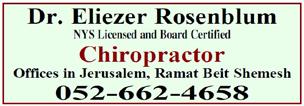

OU EXECUTIVE VICE PRESIDENT
“And I will grant peace”: You might say [upon receiving bounty], “here is food and here is drink, but if there is no peace, there is nothing!” The Torah therefore states after all this blessing, “I will grant peace in the Land.” From here we learn that peace is equal to everything else. Similarly, it says [in our morning davening], “Blessed are You Hashem… Who… makes peace and creates everything.” (Rashi to Vayikra 26:6)
Peace is an odd thing to pray for. Isn’t peace something that is upon us to make? Clearly there is peace and argument that we generate ourselves and peace and argument that come from the outside. When our parsha speaks of G-d’s blessing of peace, that blessing protects us from the interventions and disruptions of
May the Torah learning this week be in loving memory of Ann Silverberg a”h
external enemies. Yet what of the peace that must be of our own making?
Sinai was the place where we stood – in a description so familiar that it has become trite – k’ish echad b’lev echad, as one person with one heart. As Rashi notes there (Shemot 19:2), all of our other journeys ended in dissatisfaction and argument, whereas here we arrived and encamped in peace. What was the game-changer? What brought the Jewish people from bitter fractiousness to perfect unity? Ironically it was the pre-Sinai version of judicial reform.
The Torah makes very clear that the peacefulness manifest when we arrived at Sinai followed on the judicial revolution crafted just prior by Moshe’s father-in-law, Yitro, which he had predicted would result in kol ha’am hazeh al m’komo yavo b’shalom, “every member of this nation will come in peace to their rightful place.” While our sages question the chronology of those two episodes, the Torah’s presentation draws a clear connection between them.
Beloved
Malka & Avraham Shrybman
Yitro’s proposal activated Klal Yisrael and moved us from standing around and allowing our arguments to fester while waiting for someone else to step forward and settle them, to instead be active participants in resolving our disputes. Yitro’s proposal reminded us that in the pursuit of G-d and Torah we must be even more aware of the discomfort, the needs, and certainly the suffering and the sacrifices of others. Yitro did not teach us to pray for peace but to make it.
We must pray to Hashem for peace from the enemies that surround us. Without that peace, we will be unable to benefit from the many blessings with which He continues to shower us. But the peace that brought us to Sinai, the peace that allowed us to receive Torah and that elevated us as a people, was not the result of prayer to G-d but of actions and human sensitivity, of individuals stepping forward instead of shrugging their shoulders, of people who recognized the high price that some were paying to sustain and protect them and seeking to ameliorate that imbalance. Internal peace came and will always come from the sustained

s h k e l n It should come as no surprise that Ashkelon Properties just sold its 130th apartment!
After all, we have the lar gest selection of sea-view proper ties for sale or rent at the most attractive prices.
•
•
•
•

“







and our next step will be to plant a fruit tree. I never thought of myself as being the agricultural type, but the feeling of settling and planting a portion of Eretz Yisrael, has been truly euphoric. Iy”H, when we plant our tree, and eat the fruits that will grow one day, I think we will be able to truly appreciate that unique Kedusha found in the fruit of Eretz Yisrael!

To conclude, when you buy your Tu B'shvat fruit this year, don’t search for those dried apricots and banana chips imported from Turkey. Rather, head over to the fresh produce and buy yourself some nice juicy Kedusha-filled Jaffa oranges and thank Hashem for bringing you to this land order
imbibing that Kedusha in every bite that you take!!Supervised work in a supportive environment while earning a stipend for teens 14-17. For more information contact Deborah at 054-675-2026
deborah@crossroadsjerusalem.org or Avishai at 053-445-3786
Avishai@crossroadsjerusalem.org
To Register July 1st to


Live in a Historical Home in Ein Kerem for a Great Price!
Beautiful duplex apartment in the heart of Ein Kerem, 125 sqm, 4.5 rms, 1.5 baths, large rooms with domed ceilings, balcony with view over the neighborhood, close to shops, cafes and public transportation, well maintained condition, lots of potential!
Priced to Sell: NIS 3,650,000
Investment Opportunity in Armon Hanetziv!
3 room apt, 65 sqm, floor -2, balcony overlooking the park, quiet, bright, 3 air directions, for renovation. Asking price only NIS 1,650,000 This is an opportunity not to be missed!!






ALIYA-BY-ALIYA
Aliya-by-Aliya Sedra Summary
Rabbi Reuven Tradburks
RABBI REUVEN TRADBURKS
RCA Israel Region
RCA ISRAEL REGION
In memory of Evelyn Rivers a”h
Mother of Reuven Tradburks
Shmita: The Land of Israel has its Shabbat. Work 6 years, the 7th is a Shabbat to G-d. What grows on its own is available to be used. Yovel: 7 cycles of 7 years are followed by Yovel, the 50th year, the Jubilee year. It is holy; pronounce liberty throughout the Land. Slaves go free; land returns to its original owner. When selling your land, do not abuse the buyer knowing the land will return to you in the 50th year. Sell it commensurate with the years the buyer will have until Yovel. Keeping these laws will allow you to be secure in the Land. The theme of holiness is expanded yet again. We have had holiness in the Mikdash, our approach to Him in His home. We have had holiness in food. Holiness in relationships; those permitted and those not. Holiness in time; Shabbat and holidays. Now we are introduced to the holiness of the Land of Israel.
There are 2 aspects to the holiness of the
Land of Israel. First, it is the Land of the Jewish nation. We have unique laws of kindness in agriculture; leaving parts for the poor, giving support to the Kohanim and Leviim. These laws only apply in our Land, where we build our unique Jewish society.
And second, our Land is where G-d has invited us to be close to Him. We are closest to Him in His home, in the Mikdash. And in Jerusalem, His city. But the holiness of proximity to Him seeps outward from Jerusalem to the entire Land.
Hence, the Land is holy religiously and politically. It is holy in our standing close to the King. And it is holy in being our unique homeland, the place where we live according to our unique laws, reflecting Jewish philosophy.
I make this distinction deliberately. There is value in a Jewish state. The modern state of Israel has religious value; it is the Jewish state in the Jewish Land. And in addition to the State, there is religious meaning to us in this Land, to be near to the Shechina. Those are 2 values independent of each other.
2ND ALIYA (25:19-28)
Don’t be concerned that you will not have enough to eat if you rest the Land; I will provide. Let the Land not be permanently sold; for the Land is Mine, you are but sojourners on it. If one becomes needy and sells his field, redeem it. The seller may also redeem it according to the years left until it returns to him in Yovel.
After introducing our limited ownership in
the Land of Israel, the Torah switches to our responsibilities one to another. When people are in trouble, help them out. The sale of a field cannot end well. It’s losing a job. In an agrarian society, what will this former landowner do for a living? This is the beginning of a downward spiral. Redeem his field; get it back for him, so he can make a living. This is as the Talmud states: the highest form of tzedaka is giving a person a job. Redeeming the field is returning his way of making a living to him.
3RD ALIYA (25:29-38)
A house in a city may also be redeemed if sold, but only within the first year. After that, the sale is permanent. Homes in open towns are considered like fields; they may be redeemed and they return in Yovel. The towns of the Leviim, even if walled, are always able to be redeemed and they too return in Yovel. When one is in need, help him. Do not charge interest; give him life. I am G-d who took you out of Egypt to give you this Land and to be your G-d.
The Talmud points out that the progression of stories the Torah presents here is from bad to worse. A forced sale of a field due to poverty. Then the sale of a home. Then the need for a loan. And in the next aliya, sold as a slave. The cheapest tzedaka is the first one; getting the field back, avoiding this whole collapse.
4TH ALIYA (25:39-26:9)
If one is sold to you as a slave, do not oppress him. Treat him as a worker. He goes free in the Yovel year. For you are My servants. Slaves purchased from the surrounding nations are like property that passes to future generations. If a Jew is sold to a non-Jew, a relative shall redeem
him, for the Jewish people are servants to Me; My servants that I redeemed from Egypt. (Bechukotai) And if you will do all my mitzvot, you will have bounty, peace, unusual success against your enemies. I will turn to you, multiply you and fulfill My covenant with you.
Parshat Bechukotai, though short, is powerful. Following an entire book of holiness, the stakes are laid out. The pursuit of holiness in the Land that is holy is a high stakes endeavor. The achievement brings wonderful blessing; food, peace, health. For us, who enjoy walking in this holy place, the blessings are abundant. Though we know from history, so is the …. opposite.
5TH ALIYA (26:10-46)
And I will be in your midst; I, your G-d, You, my people. I will remove the yokes from you and you will walk proudly. But if you do not do My mitzvot, I too will not pay attention to you. You will be subjected to illness, to enemies, to drought. If you persist in ignoring Me, I will persist in ignoring you, leaving you vulnerable to war, pestilence, famine. Your holy places will be vanquished, your cities destroyed; you will be scattered around the world. Then the Land will have the rest of its Shmita. You will be panicked in your exile, afraid of a driven leaf. You will admit your failings; I will remember my promises to you. Even in your dispersion, I will not allow you to be destroyed.
Failure to live up to the demands of this holy place brings desolation and exile. The Land of Israel is described as flowing with milk and honey. And yet we know that once the Jewish people left, the land was barren. The desolation of the Land of Israel without the Jewish people is legendary. Chilling.
The diaspora of the Jewish people is predicted here. We know all too well the extent of that exile and the suffering we endured in it. Jewish suffering in exile was taken by other religions to be a sign of the rejection of the Jew.
But for us returnees, those of us walking tall in our Land, well, for us, if we saw exile as G-d’s disfavor, shall we not delight that our return is, I guess, His Pull? If the exile was Divine displeasure with our dismissive attitude to Him, the return to the Land can only be Divine pleasure in bringing us close. And the return to the Land of Israel, so unexpected, so unprecedented, and so dynamic is a powerful refutation of the rejection of the Jew.
And a charge for us; to never be dismissive of Him, but to engage, to search, to reach. What privileged times we, the undeserving, are fortunate to be a part of. And how vigilant we need to be to not again be dismissive of Him in His Land.
6TH ALIYA (27:1-15)
When you make a vow of your value to G-d, there are set values for different ages and stations. This value is given to the Mikdash. If you pledge an animal, it is given and should not be switched. A pledge of a home may be given or redeemed. Following the chilling section of the curses, the book of Vayikra ends with a full chapter of laws of vows. Generosity inspires contributions to the Mikdash. That’s a good thing. The religious center of the Jewish people needs contributions.
But this section is not only about what is given; but also, what is not. When I pledge my value, is my intent to become a monk, giving up my life to serve in the Mikdash?
The Torah does not endorse that. Pay money; keep your station in life. The Torah imposes the interpretation of vows of people and their value to be monetary gifts; but not Temple slaves. If you pledge an animal? Fine, let that become a sacrifice. But not you. Or any around you.
A home too; the Torah does not want the Mikdash to acquire vast holdings. Homes are for people; the Mikdash is to be splendid, grand, and inspiring. But it is not to become a vast financial empire.
If a field is pledged, its worth until Yovel is calculated. That value is given to the Mikdash to redeem the field. If it is not redeemed, it remains with the Mikdash even after Yovel. Property which becomes owned by the Mikdash may not be redeemed.
Fields are the quintessential means of livelihood. If you wanted the Mikdash to be a financial empire, fields would be the place to start. But the Torah’s default is that a donation of a field ought to be redeemed. Fields are for the people to make a living; not for the Mikdash.
The book of Vayikra, the book of man’s approach to G-d, ends with a sober balance. While we approach G-d, dedicate our lives to Him, reach for Him, and He for us, the Torah protects us from going too far, from divesting of our assets, ridding ourselves of our homes and becoming a Temple slave, giving our all to the Mikdash.
Our challenge is to be holy in our homes and our fields while reaching for the Divine.







BY RABBI DR. TZVI HERSH WEINREB OU EXECUTIVE VICE PRESIDENT, EMERITUS
BY RABBI DR. TZVI HERSH WEINREB OU EXECUTIVE VICE PRESIDENT, EMERITUS
This week, we read one of a series of double parshiyot, Behar and Bechukotai. Both parshiyot are rich in verses which lend themselves to diverse explanations and elaborations, many of which are to be found in the vast Midrashic literature with which we are blessed.
I’ve chosen to focus on the opening phrase from the second of our two parshiyot, Bechukosai. It reads, “Im bechukosai telaichu,” which is generally translated as “If you follow My statutes…”. However, the literal translation, and exact meaning, of the verse is “If you walk in My statutes.” The verb “walk” in this context is a bit puzzling, even provocative. What might it mean to “walk” in statutes, to walk in the laws of Torah?
To address this dilemma, many commentaries quote the following passage in the Midrash Rabba on this verse:
“If you walk in My statutes”. This is expressed in the verse (Psalms 119:59), “I have planned my paths and have redirected my feet toward Your teachings.” Thus, King David said to the Master of the Universe: “Each and every day I plan my destination toward a particular place, toward a specific residence. Instead, my feet guide me to Your synagogues and study halls, l’batei knessiot
u’I’batei midrashot”.
The eighteenth-century commentator, Rabbi Chaim ben Atar, author of Ohr HaChaim, offers no less than 42 explanations for this unusual phrase and this startling Midrash. In the sixteenth of these many interpretations, he suggests that “walk” might mean “travel.” Thus, the meaning would be that if you are about to travel on a journey, you are advised to study a bit of Torah beforehand so that you “walk/ travel” in the company of the Torah you have studied. The Torah thus accompanies the traveler on his journey, sheltering him from the dangers of the road. This approach echoes the teaching of our Sages in Talmud Bavli Berakhot 14a to the effect that it is prohibited to depart upon a journey before one has engaged in Torah study, as is written (Psalms 85:14), “Justice goes before him as he sets out on his way”.
The twentieth-century major halachic authority and tragic victim of the Holocaust, Rabbi Yissachar Shlomo Teichtal, favors this interpretation of the Ohr HaChaim, over the other forty-one. He writes:
This Midrash tells the story of King David who would not embark upon any journey, whether a short foray or a lengthy
expedition, without first studying some Torah. Of course, King David had access to many study halls, but we can nevertheless emulate his practice even if study halls are not available to us. Torah study in the privacy of one’s home is acceptable, and even a brief verse or two of Torah will suffice if that is all that time allows.
There is another way of understanding King David’s statement as narrated in the Midrash. King David is, in a sense, reporting upon his own experience. After all, he is a king, and a very busy one at that. He starts off his day with all sorts of plans, appointments, meetings, and destinations. He has worldly responsibilities of all sorts. His intentions correspond to his royal role.
Yet somehow, at the end of the day, and often long before that, he finds himself in the beit midrash studying the Almighty’s Torah. Has he deliberately and consciously abandoned his plans and mundane tasks? No!!
Somehow his “feet” have misled him. His inner self has propelled him to take a detour and follow the path to the study hall rather than the path to lesser destinations.
I have found this “take” on King David’s experience an apt metaphor for so much of the human experience. Do not most of us chart our futures guided by all sorts of plans regarding our education, our lifestyle, our careers, our relationships? At times, those plans are realized, although seldom exactly as we thought they would turn out. Often, however, fate intervenes in unpredicted and unpredictable ways, and we find ourselves in situations far removed from what we had anticipated. In moments of religious contemplation, we may even come to realize that it was not fate that intervened, but a
Divine source, a surprisingly new spiritual script written and guided by the One Above.
Frankly, I have felt this “Davidic” experience more than once in my own career. I began as a teacher of Torah to high school boys. I was tempted to pursue higher secular education and pursued and obtained advanced degrees and professional training in the field of psychotherapy. I found employment in school systems, clinics, colleges, private practice, and even Jewish community work. I enjoyed those experiences and found them meaningful and spiritually rewarding.
I knew where I was going—or so I thought.
My “feet” kept taking me back to the synagogue and study hall. Opportunities arose, environments changed, the times beckoned, and I found myself teaching Talmud, delivering Torah lectures to a wide array of audiences, and leading prayer services. I went through a series of career changes, some moderate, and some totally life changing. My children, now grandparents themselves, would often tease me tauntingly, saying “Daddy, what do you want to be when you grow up?”
I’m not sufficiently presumptuous to compare myself to King David, but I’ve concluded long ago that he was not speaking only for himself in that beautiful Midrashic passage. He was talking about a very widespread basic human experience.
I especially have come to see this human experience play out in a wide range of social contexts.
One dramatic instance of this phenomenon can be discerned in the so-called Baal Teshuvah movement. We have been witnessing this development for some sixty years now. Men and women, some quite young,
some middle aged, some quite old, who were ignorant of Jewish observance and who were planning totally secular, nay gentile-like, lives, who were already living lives totally ignorant or deeply alienated from things Jewish. At some point, after some chance encounter with a rabbi or teacher, after spending a Shabbat in an observant home, after meeting a man or woman with whom they fell in love and who introduced them to an observant life-style, or any one of a multitude of other scenarios, their “feet” led them not just to synagogues and study halls but to a redefinition of their entire lifestyle. There are other instances of this phenomenon, but let us conclude with one dramatic one. I refer to the young men and women with lifelong exposure to traditional Jewish observance. We refer to them in a language similar to the verses I’ve been referencing in this essay. We call them “off the derech,” off the path. They very much resemble, of all people, King David. They too have started their “day” planning to wander in so many directions, all “off the path.”
But at some point, for a nearly infinite number of reasons, their “feet” have redirected them. Sometimes it is an inexplicably retrieved “leap of faith.” In other circumstances, it is a long, arduous, and back-andforth process. But it is often, increasingly often, that their paths twist and turn back to “the path,” the derech. Typically, it is not precisely the derech they once abandoned. It is a derech that fits them as individuals and that allows them to return to an authentic and personally satisfying Jewish life, a return to the batei knessiot u’batei midrashot that speak to them and meet their legitimate and sincerely desired spiritual goals.


Now taking reservations for July/August for the perfect family getaway in the Lower Galilee! Well appointed kosher home with indoor/outdoor kitchens 15m pool, gorgeous grounds Space for 40 people


been memorialized in a
Doris Weinberger a"h
Max Weinberger z”l
Greatly missed by their children, grandchildren and great grandchildren
Rav Aryeh and Dvora Weinberger
Bernie and Leah Weinberger
Menachem and Hannah Katten
Patience is necessary for those who follow Isaac's way. But a wise woman taught us that patience is but another name for hope. That woman was Jane Austen, who put these words into the mouth of one of the characters in her great novel, Sense and Sensibility: "Know your own happiness. You want nothing but patience—or give it a more fascinating name: call it hope."
In observance of the Shloshim of our friend Yehuda Leib Berren z"l
Rav Menachem Weinberg will give a shiur in his memory "Heroic Joy"
Monday evening, 23 November/ 8 Kislev 7:30pm
Zoom Meeting: 853 8980 1519

Password: Yehuda shmuelnathan4@gmail.com




RABBI SHMUEL GOLDIN FACULTY, OU ISRAEL
BY RABBI SHMUEL GOLDIN Faculty, OU Israel Rabbi Emeritus, Congregation Ahavath Torah, Englewood NJ
What should be our initial response to the application of a potential convert to Judaism?
In the Tractate of Yevamot, the Babylonian Talmud issues clear instructions:
With the month of Nissan upon us, we return to the story of our nation’s birth, as Moshe rises to leadership and the exodus again unfolds.
[If a prospective] proselyte comes to convert in the present era, we say to him: “What did you perceive that prompted you to come? Do not know that Israel [i.e., the Jewish people] is, in this day, afflicted, oppressed, downtrodden, and harassed – and that hardships are frequently visited upon them?”
Moshe’s yearly introduction in the text, however, is cause for pause. For some reason, the Torah chooses to introduce the birth of the greatest leader we have ever knownin the most innocuous way possible.
If the individual responds: “I know, and I am not even worthy [to share in their hardships],” we accept him immediately [as a potential convert worthy of education].1
“And a man went from the House of Levi and he took a daughter of Levi. And the woman conceived and gave birth to a son.”
Questions abound:
concerning the Jewish attitude toward conversion:
Parsha that follows (why the information is given at that particular point is the subject of another article).
Jewish tradition does not view conversion to Judaism negatively.
If the information concerning Moshe’s lineage is eventually shared, why is it left out in the first place?
In fact, the opposite is true. Righteous converts are meant to be held in high esteem.
Three times daily, we recite in the weekday Amida: “Upon the righteous, the pious, the elders of your people the house of Israel, the remnant of their scholars, the righteous converts, and upon us, may your compassion be aroused…” Clearly, this blessing places the convert in rarefied company, indicating the deserved respect meant to be shown to someone who becomes a “Jew by choice.”
Numerous commentaries address the issues before us…
Working within the realm of pshat, the Ibn Ezra suggests that, at the time of Moshe’s birth, the Israelites lived in many cities in Egypt. Through the phrase, “And a man went,” the Torah is simply informing us that Amram “went” from one Egyptian city to another in order to marry Yocheved.
Our initial hesitancy toward a potential convert is not a reflection of a negative bias toward conversion, but stems instead from two important facts.
Perhaps the Ibn Ezra intends to emphasize that Yosef’s plan for his family’s descent into Egypt has, by this point, broken down. Originally meant to remain separate from the Egyptians in the land of Goshen, the Israelites are assimilating into their surroundings.
Why does the Torah depart from its usual mode of describing an individual’s birth?
Only after this interchange has taken place, continues the Talmud, do we begin to teach the candidate about the enormous responsibilities inherent in halachic obsevance.
What does the seemingly superfluous phrase “and a man went…” indicate?
What prompts the scholars of the Talmud to suggest this specific response to a potential convert?
Why does the Torah omit any mention of Moshe’s lineage- to the point where even the names of his parents are deliberately omitted?
Above all, is this any way to introduce a hero?
Why begin the encounter with discouragement? And, why this particular dissuasion, which focuses on the travails of the Jewish people?
Compounding these questions is the fact that the omitted information concerning Moshe’s lineage is ultimately included in the
Before addressing the questions above, we must correct a widespread misconception 1. Talmud Bavli Yevamot 47a.
In Jewish thought, you do not need to be be Jewish to be righteous. Properly observed, Judaism is the most tolerant of religions. Unlike other faith traditions, Judaism accepts the existence of different paths toward God. The very existence of the Seven Noachide Laws – seven basic moral principles incumbent upon the nations of the world – is proof of this truth.
The Ramban, however, takes issue with the Ibn Ezra’s interpretation, arguing that the Torah would have no reason to inform us concerning a journey taken by Amram from one city to another.
Instead, maintains the Ramban, the verb lalachet, “to go,” is often used in the text when a new and difficult step is about to be taken. By stating, Veyeilech ish, “And a man went,” the Torah underscores Amram’s courageous willingness to marry in spite of Pharaoh’s harsh decrees.
The Ramban’s approach connects to a
Our response to the potential convert is designed to give the aspirant pause. You need not take this step, we counsel the individual. While we are deeply confident in the meaningfulness of our tradition and law, it may not be right for you. And, from our perspective, that is just fine. For we believe that you can
be righteous while remaining outside of our faith tradition.
Judaism demands seriousness of intent from a potential convert. Conversion to Judaism is far from a pro forma process. A person who wishes to become Jewish must accept all the obligations that such joining entails. The potential convert is, therefore, initially discouraged from continuing on this path in order to underscore the seriousness of the step about to be taken…and he/she is clearly told that, upon the conclusion of the process, he/she will be on longer be able to “opt out.”
Our questions, however, are now deepened. Why does the Talmud mandate discouragement based on the persecution of the Jewish people? Given the reasons for our hesitancy, wouldn’t it make more sense to instead stress the halachic obligations that the convert will be required to accept?
Upon consideration, the rabbinic rationale for the convert’s first steps toward “Jewishness” becomes clear. The convert’s journey to Jewishness must mirror our own.
The Jewish nation is born through two distinct yet interrelated, events. Obvious proof of the fact lies in the calendar journey before us.
Pesach precedes Shavuot; the Exodus precedes Revelation.
Before an individual could arrive at Sinai, that individual had to be willing to first leave Egypt, to throw his/her lot in with a fledging nation traveling into the unknown. This was far from an easy step. The rabbis, in fact, maintain that only one-fifth of the Jewish people left Egypt during the Exodus.2 The narrative before us is not a fairy tale, the rabbis declare. Leaving “the known” for the “unknown,” even when the reality you
2. Mechilta, Shmot 13:18 (quoted in Rashi).
know is oppressive bondage, requires faith and courage.
The first step toward Jewishness, we inform the potential convert, is the first step our ancestors took centuries ago: conscious affiliation with the Jewish people.
Only if you are willing to be part of this people, in good times and bad, only if you are willing to share in its sorrows as well as its victories, can you begin your journey toward becoming a Jew.
Support for our suggested explanation is found in another powerful Talmudic observation concerning the process of conversion. The rituals required in the eventual conversion process – circumcision for a male, immersion in a mikva (a pool of naturally obtained water), and acceptance of halachic law – are directly derived from the rituals experienced by the Israelites at Sinai. Once again, the convert’s journey toward Jewishness must mirror our own.
Emerging from these combined rabbinic observations is an astonishing truth concerning Jewish identity: fundamentally, we are a nation of converts. The descendant of Avraham, standing at Sinai, who refuses to accept the obligations divinely revealed, disappears from the Jewish story. In contrast, the Egyptian who accompanies the Israelites out of Egypt and who, standing at Sinai, wholeheartedly accepts those obligations becomes a full Jew. The convert who chooses Judaism today shares the journey of all Jews. Whether

today or through our ancestors at Sinai, we are all converts.
The period between Pesach and Shavuot thus acquires a unique tension and beauty. Traveling between the two essential steps that shape our nation’s birth – the Exodus from Egypt and the Revelation at Sinai – we yearly relive our national journey toward Jewishness.3 We once again connect with the truth that we are a nation like no other,
3. It should be noted that we use a degree of poetic license when we speak of our historical journey toward “Jewishness.” The terms “Jew” and “Jewish” actually emerge much later in history, during a period of national division. Most Jews trace back to the Kingdom of Judea, conquered by the Babylonians in . Judea consisted primarily of two tribes of Israel, Binyamin and Yehuda, who, upon exile to Babylon, retained their Jewish identity. The ten other tribes, constituting the Kingdom of Israel, were conquered earlier by the Assyrians, only to disappear into the mists of assimilation.
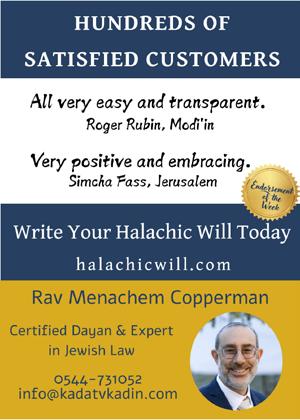
an eternal people born out a shared destiny.
A personal experience underscores the wisdom of the sages. A number of years ago, during my first rabbinic tenure in Potomac, Maryland, I taught a young woman in preparation for her possible conversion. While she seemed sincere enough, something just didn’t sit right. Try as I might, however, I could not put my finger on the problem. Something was awry, but I couldn’t tell what.
Suddenly, one evening, she called me on the phone in tears.
After almost five decades, her words remain as clear to me as if they had been spoken yesterday.
“I just saw a television program on the Holocaust,” she said. “I could never become part of a people that the world could do that to.”
After this realization, she broke off her pursuit of a conversion.
It was then, early on in my rabbinic career, that I realized the wisdom of the rabbis in their approach to conversion. The first step toward Jewishness is affiliation with the Jewish people. To become a Jew, the convert must be someone who would rather be “part of a people that the world could do that to” than “part of a world that could do that to a people.”
As we traverse the period between the festivals of Pesach and Shavuot, we renew our affiliation with our own people and its destiny. We look back across the centuries and realize that our first steps out of Egypt, toward Sinai, launched a people’s story in which we can take deserved pride.
Rabbi Goldin is the author of the OU Press volumes "Unlocking the Torah Text," and "Unlocking the Haggada."

Bricks tone specializing in safety deposit vaults is opening its new branch to residents of Jerusalem and surrounding areas in the Clal Building. At your service are safety deposit boxes of various sizes to s tore your valuables. The center is secured 24/7 at the most stringent international standards. The location and boxes are secured by Lloyds International.

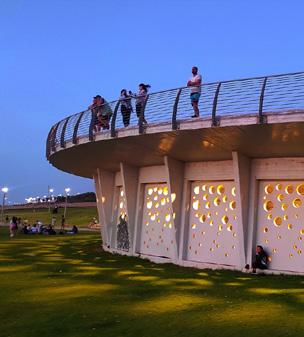

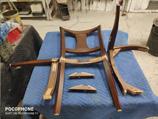







Annual Campaign
Donation days: Tuesday & Wednesday May 27-28 2025 | 29 Iyar - 1 Sivan 5785


Ahavat Yisrael
Partners in Impact: Join us on the journey to strengthen Jewish identity and unity across the globe
Strengthening the Spirit
Ensure that meaningful Torah study continues to uplift and inspire.
Strengthening Our Shlichim
Build the Next Leader: Invest in the training and empowerment of passionate, mission-driven Torah ambassadors.
360 ₪

Once a Shaliach, Always a Shaliach
Alumni Giving Forward: Shlichut isn’t a momentit’s a mindset.
500 ₪

Answering the Call
Sponsor a year of impact: Empower a full-time shaliach to bring Torah, community, and connection to Jews around the world.
1,200 ₪
100₪ X12
2,160 ₪
180₪ X12
18,000 ₪
1,500₪ X 12






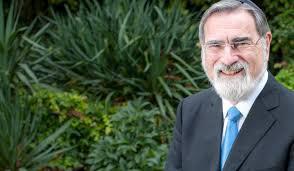
RABBI LORD JONATHAN SACKS ZT"L
RABBI LORD JONATHAN SACKS ZT"L
FORMER CHIEF RABBI OF THE UNITED HEBREW CONGREGATIONS OF THE COMMONWEALTH
FORMER CHIEF RABBI OF THE UNITED HEBREW CONGREGATIONS OF THE COMMONWEALTH
May the learning of these Divrei Torah be תמשנ יוליעל HaRav Ya'akov Zvi ben David Arieh zt"l
As I was writing this essay, a newspaper headline caught my eye. It read: “The UK’s richest people have defied the double-dip recession to become even richer over the past year.”1
This is in spite of the fact that most people have become poorer, or at least seen their real income stay static, since the financial crisis of 2008. As the saying goes, “There’s nothing surer: the rich get rich and the poor get poorer.” It is to this phenomenon that the social legislation of Parshat Behar is addressed.
Leviticus 25 sets out a number of laws whose aim is to correct the tendency toward radical and ever-increasing inequality that result from the unfettered play of free market economics. So we have the Sabbatical year (Shemittah) in which debts were released,
1. Rabbi Sacks wrote this essay in April 2012. The headline he mentions can be found here: https://www.bbc.com/news/uk-17883101
Hebrew slaves were set free, the land lay fallow and its produce, unharvested, belonged to everyone. There was the Jubilee year (Yovel) in which, with some exceptions, ancestral land returned to its original owners. There was the command to help the needy (“If any of your fellow Israelites become poor and are unable to support themselves among you, help them as you would a foreigner and stranger, so they can continue to live among you” Lev. 25:35.)
And there was the obligation to treat slaves not slavishly but as “hired workers or temporary residents.” (Lev. 25:40)
As Heinrich Heine pointed out: “Moses did not want to abolish ownership of property; he wished, on the contrary, that everyone should possess something, so that no man might, because of poverty, be a slave with a slavish mind. Liberty was forever the ultimate thought of this great emancipator, and it still breathes and flames in all his laws which concern pauperism.” (Israel Tabak, Judaic Lore in Heine, Johns Hopkins University Press reprints, 1979, 32.)
Despite the sheer antiquity of these laws, time and again they have inspired those wrestling with issues of liberty, equity and justice. The verse about the Jubilee Year, (“Proclaim Liberty throughout all the land unto all the inhabitants thereof.” Lev. 25:10) is inscribed
on the Liberty Bell in Philadelphia. The international movement that began in the late 1990s and involved more than 40 nations, campaigning for cancellation of Third World debt, was called Jubilee 2000 and was directly inspired by our Parsha.
The approach of the Torah to economic policy is unusual. Clearly we can make no direct inference from laws given more than three thousand years ago, in an agricultural age and to a society consciously under the sovereignty of God, to the circumstances of the twenty-first century with its global economy and international corporations. Between ancient texts and contemporary application comes the whole careful process of tradition and interpretation of the Oral Law (Torah shebe’al peh).
Nonetheless, there do seem to be some important parameters. Work – making a living, earning your daily bread – has dignity. A Psalm (Tehillim 128:2) states:
“When you eat of the labour of your hands, you are happy and it shall be well with you.” (Psalms. 128:2)
We say this every Saturday night at the start of the working week. Unlike aristocratic cultures such as that of ancient Greece, Judaism was never dismissive of work or the productive economy. It did not favour the creation of a leisured class.
“Torah study without an occupation will in the end fail and lead to sin.” (Avot 2:2)
Next, unless there are compelling reasons otherwise, one has a right to the fruits of one’s labours. Judaism distrusts large government as an infringement of liberty. That is the core of the prophet Samuel’s warning about monarchy: A king, he says, “will take the best of your fields and vineyards and olive groves


Jerusalem Real Estate is My Business Eta: 054-723-3863
Amazing stand alone homes in OLD KATAMON, TALBIYA, BAKA, GERMAN COLONY
180 sqm Penthouse on an exclusive street in ARNONA
Fabulous views.
40 sqm balcony, registered parking.
Very high standard finish.
Price: 9,200,000 NIS


OLD KATAMON.
174 sqm primary residence, large garden in use, fully accessible, 4 bedrooms. Plus a studio of 19sqm. 9,500,000 NIS.
Rental in BAKA
Gedalia 4. 200 sqm 4 bed 4 bathroom. Fully furnished (optional). One other apt on floor.
18,000 NIS/month
SAN SIMON Ben Tabai 150 sqm. 9th floor. 3 bedrooms and 2.5 bathrooms. 2 elevators, underground parking & storage. completely accessible-turn key. Price 7,700,000 NIS
Exclusive BAKA. Mordechai Hayehudi. 107 sqm plus permit for 73 sqm & terrace. Sukkah terrace main floor. Elevator, pkg, storage. 6,800,000 NIS




Eta Morris Realty, Ltd. etamorrisrealestate@gmail.com Eta: 054-723-3863 etamorrisrealty.co.il
and give them to his attendants ... He will take a tenth of your flocks, and you yourselves will become his slaves” (I Sam. 8).
Judaism is the religion of a people born in slavery and longing for redemption; and the great assault of slavery against human dignity is that it deprives me of the ownership of the wealth I create. At the heart of the Hebrew Bible is the God who seeks the free worship of free human beings, and one of the most powerful defences of freedom is private property as the basis of economic independence. The ideal society envisaged by the prophets is one in which each person is able to sit “underneath his own vine and fig tree” (Micah 4:4).
The free economy uses the fuel of competition to sustain the fire of invention. Long before Adam Smith, Judaism had accepted the proposition that the greatest advances are often brought about through quite unspiritual drives. “I saw,” says the author of Ecclesiastes, “that all labour and all achievement spring from man’s envy of his neighbour”. Or as the talmudic sages put it, “Were it not for the evil inclination, no one would build a house, marry a wife, have children, or engage in business.”
The rabbis even favoured the free market in their own sphere of Jewish education. An established teacher, they said, could not
object to a rival setting up in competition. The reason they gave was, simply: “Jealousy among scholars increases wisdom” (Bava Batra 21a).
The market economy is the best system we know for alleviating poverty through economic growth. In a single generation - in recent years - it has lifted 100 million Indians and 400 million Chinese from poverty, and the sages saw poverty as an assault on human dignity. Poverty is not a blessed or Divinely ordained condition. It is, the rabbis said, ‘a kind of death’ and ‘worse than fifty plagues’. They said, ‘Nothing is harder to bear than poverty, because he who is crushed by poverty is like one to whom all the troubles of the world cling and upon whom all the curses of Deuteronomy have descended. If all other troubles were placed on one side and poverty on the other, poverty would outweigh them all.’


However, the market economy is better at producing wealth than at distributing it equitably. The concentration of wealth in a few hands gives disproportionate power to some at the cost of others. Today in Britain it is not unusual for top CEOs to earn at least 400 times as much as their employees. This has not produced economic growth or financial stability but the opposite. As I write these words, one of Margaret Thatcher’s advisors, Ferdinand Mount, has just published a critique of the financial deregulation she introduced: The New Few. Equally impressive is the recent book by the South Korean economist Ha-Joon Chang, 23 Things they don’t tell you about Capitalism. This is not a critique of market economics, which he believes is still the best system there is. But, in his words, “it needs careful regulation and steering.”
That is what the legislation contained in
Behar represents. It tells us that an economic system must exist within a moral framework. It need not aim at economic equality, but it must respect human dignity. No one should become permanently imprisoned in the chains of debt. No one should be deprived of a stake in the commonwealth, which in biblical times meant a share in the land. No one should be a slave to his or her employer. Everyone has the right – one day in seven, one year in seven – to respite from the endless pressures of work. None of this means dismantling the market economy, but it may involve periodic redistribution.
At the heart of these laws is a profoundly humane vision of society. “No man is an island.” We are responsible for one another and implicated in one another’s fate. Those who are blessed by God with more than they need should share some of that surfeit with those who have less than they need. This, in Judaism, is not a matter of charity but of justice – that is what the word tzedakah means. We need some of this spirit in advanced economies today if we are not to see human misery and social unrest.
No one said it better than Isaiah in the first chapter of the book that bears his name: Seek justice, encourage the oppressed, Defend the cause of the fatherless, Plead the case of the widow ... (Is. 1:17)
Humanity was not created to serve markets. Markets were made to serve the image of God that is humankind.
These weekly teachings from Rabbi Sacks zt”l are part of his ‘Covenant & Conversation’ series on the weekly Torah teaching. With thanks to the Schimmel Family for their generous sponsorship, dedicated in loving memory of Harry (Chaim) Schimmel. Visit www.RabbiSacks.org for more.
GREAT INVESTMENT CLOSE TO EMEK REFAIM
3.5 rooms, first floor, good shape, with a process to get a new 4 room apt of 107, in a luxury building with elevator, 12m balcony, storageroom, parking, 2,950,000 NIS (potential to double the investment!)
OLD TALPIOT CLOSE TO BAKA
Large 4 rooms, 103m, first floor, in a stone building, cute balcony, master bedroom, quiet, storageroom, parking, 3,850,000 NIS
HEART OF OLD KATAMON
Nice 4 rooms, in a stone building with Shabbat elevator and access without stairs, 92m, 3rd floor, balcony with panoramic view, bright, storage room, private parking, 4,700,000 NIS. Rare!
SAN SIMON CLOSE TO THE PARK
Large 5.5 rooms, 125m neto, in a building with Shabbat elevator, 14m balcony, good shape, large living room, quiet, storageroom, parking, 5,150,000 NIS
28, Kovshei Katamon Street, Jerusalem Tel: 02.5633008 - www.ben-zimra.com
Former Assist. Clinical Professor of Medicine, UCLA School of Medicine; Div.


BY RABBI NACHMAN (NEIL) WINKLER FACULTY, OU ISRAEL CENTER
This week’s haftarah selection from Sefer Yirmiyahu is divided between the final 3 verses of the 16th perek and the first 14 p’sukim of the 17th perek. We generally focus upon the prophet’s harsh condemnations of Israel which, it would seem, is a result of its connection to the harsh condemnations voiced by Moshe Rabbeinu in the “tochacha” of Parshat B’chukotai.
Nonetheless, after a careful reading of the haftarah, we might be surprised to find that only four of the seventeen verses contained in the haftarah (17; 1-4) are actual words of censure and criticism of the nation! Indeed, much of Yirmiyahu’s message is a positive one, describing the rewards for those who trust in HaKadosh Baruch Hu.
The opening p’sukim tells of Hashem as


our Refuge and of the eventual realization by the nations’ of their pointless worship of idols, a worship “bequeathed” to them by past generations. The closing section, that which follows the navi’s censure of Israel, goes on to enumerate the blessings that would accrue to those who fully trust in G-d, and closes with the guarantee that such faithful followers need not be concerned about any possible mishaps, as G-d protects His adherents.
Given this more positive approach to Yirmiyahu’s prophetic lesson, we may better understand an essay of Rav Soloveitchik regarding the message of the haftarah. The Rav addresses the curious pasuk [17:12] that seems to have little connection to the ideas expressed by Yirmiyahu in this perek: “Kiseh kavod maron merishon m’kom mikdasheinu” – “As the Throne of Glory, exalted from the beginning - so too is the place of our Sanctuary”.
Rav Soloveitchik clarifies the intent of the verse by pointing to the words found in Sefer Amos (9: 14-15) promising Israel’s return to her land - yet never guaranteeing the land’s return to her children! After all, might not the invading conquerors develop the land so that the land would not wait for her rightful owners’ return before blossoming and blooming? The Rav relies on the pasuk in our parasha [Vayikra 26: 31] in which Hashem reassures the people that, although He would lay waste to the holy places, the land would remain desolate and barren. Based on that promise, Rav Soloveitchik insists that such a
guarantee did not only ensure that the land would wait for the return of her children but that the sanctity of Eretz Yisra’el itself would remain…. despite its destruction!
It is this guarantee that has the prophet assert that the sanctity of the land would remain “exalted” as the very throne of Hashem will. It is this very pasuk that changes the tone and the message of Yirmiyahu from that of censure to that of hope. In effect, the navi was proclaiming that “churban”, physical devastation or demolition of the Holy Land, would not- and could not - nullify the essence of “Mikdash”, i.e., sanctity and purity.
And so, as we now observe the mournful days of the Omer and recall the misfortunes and heartbreaks that filled these weeks, we would also do well to take the positive message offered by Yirmiyahu. The navi reassures Israel that, despite the tragedies that would befall the nation, her sanctity remains, her future-guaranteed.
It is especially on this Shabbat, a mere two days before celebrating the miracles of Yom Yerushalayim, that we must realize the truth of the words of Yirmiyahu and the teaching of the Rav: No matter the Churban we have suffered over the centuries - our Mikdash still stands, our Torah still inspires and our nation remains - strong and sanctified.
Rabbi Winkler’s popular Jewish History lectures can be viewed by visiting the OU Israel Video archive: https://www.ouisrael.org/video-l ibrary













Join us to get all the information you need about your upcoming Aliyah!
May-June, 2025 | Online
MedEx is the can’t-miss event for medical professionals considering Aliyah!
May 25, 2025 | Paris France
Celebrating the thousands of Olim who are making Aliyah this summer!
May-September, 2025 | nbn.org.il/flights
Join us for a conference packed with dynamic, tailormade sessions to help you optimize your finances.
Sunday, June 15, 2025 | 9:45am-16:00pm | NBN Aliyah Campus JLM
Join us for a fair featuring a wide variety of books written by Olim authors!
Sunday, June 29, 2025 | 17:30-20:30 | NBN Aliyah Campus JLM
Our dedicated NBN staff offer one-on-one assistance to help you navigate and understand any challenging Hebrew task.
Tuesdays, NBN Aliyah Campus JLM | Thursday, NBN TLV Center
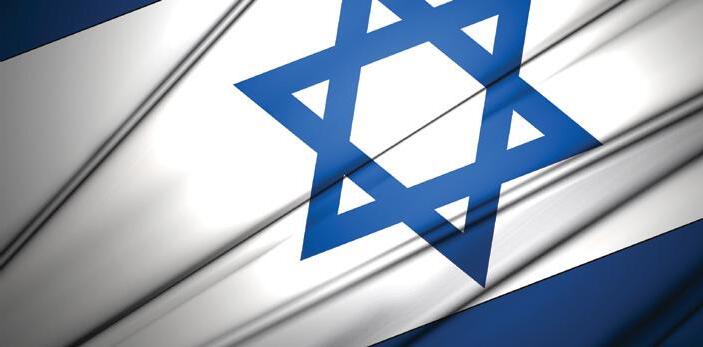
www.nbn.org.il/all-events



As our courageous and resilient soldiers continue to defend and protect the State of Israel, Nefesh B'Nefesh, Friends of the IDF (FIDF), and Jewish National Fund - USA are committed to giving back. We are, once again, offering free flights to help parents be closer to their Lone Soldiers in Israel.



is reluctant to send Yishmael away and Yitzchak seeks reconciliation with Yishmael and seeks to bless Esav.

Rabbi Shalom
ROSNER
6th Aliya (25:1-11) Avraham marries Keturah; they have 6 sons. All that Avraham has goes to Yitzchak; these are sent eastward with gifts. Avraham dies at age 175; he is buried by Yitzchak and Yishmael in Ma’arat Hamachpelah. Yitzchak is blessed by G-d: he lives in Beer L’chai Roi. The transition from Avraham to Yitzchak is complete. While G-d has been a silent partner in this parsha, here He completes the generational transfer – He blesses Yitzchak. The Jewish people will be Yitzchak and not Yishmael.
is to emphasize that the Torah is not as interested in the history of power as in the history of the covenant of G-d with the Jewish people. And that will be told at great length.
The theme of this week’s haftorah echoes the theme in our parsha which mentions both the death of Sarah and Avraham.
somewhat puzzling.
King David was an older man and a woman was assigned to him to serve him and provide warmth.
If you should wonder, “What will we eat in the seventh year? We cannot sow, and we cannot gather in our produce!” I will command My blessing for you in the sixth year, and it will yield enough produce for three years, for you will sow in the eighth year…. (Vayikra 25: 20-22)
7th Aliya (25:12-18) The generations of Yishmael are enumerated. Yishmael dies. His descendants dwell from Egypt to Assyria. Yishmael’s story is brief. He has numerous and powerful offspring. The brevity
In this week’s parsha we are informed of the laws of Shmita. In the pesukim outlined above, there are two statements that seem
First, the Torah seeks to alleviate any fears of lack of food during the seventh year –
Adoniyahu, one of King David’s sons, began to prepare for ascension to his father’s throne. This was despite the fact that King David expressed his wishes that his son Shlomo succeed him.
Adoniyahu convinces two very significant personalities - the High Priest and the commander of King David’s armies - to
BY RABBI CHANOCH YERES
R av, Beit Knesset Beit Yisrael, Yemin Moshe
When Avraham addresses the people of Cheit, trying to acquire a burial spot for his wife, he says “Ger V’Toshav Anochi Eimachem” (23:4) “A Stranger and a Resident am I with you”
– don’t be concerned that there will be no food during the seventh year, even though one is forbidden to plant and gather produce during that year. Wait a second. The food that we eat during the seventh year is the result of what was planted during the sixth year. The actual concern should be what will we eat in the eighth year if we do not plant during the seventh year? Why does the Torah address a fear of lack of food in the seventh rather than the eighth year?
This seems to be a contradiction. If one is a stranger than he is not a resident, if he is a resident than he is no longer a stranger. What did Avraham mean?
The Magid of Dubno (Jacob ben Wolf Kranz 1741-1804) explains that Avraham watched how he spoke in this tense situation in order to, both, state his truth and be able to keep the peace -Shalom Bayit. Avraham said, on the one hand, “I am a Resident’ due to G-d’s promise to receive this Land and on the other hand, I still need your agreement to purchase a plot. In other words, Avraham implied “I am the resident” and you are the “strangers”, while they understood him as saying that “they” are the residents and Avraham is the stranger. The peace was kept, and Avraham remained true to his ideals. Shabbat Shalom
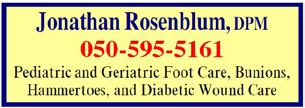

Rabbi Twersky, using a psychological insight, explains as follows. Often when someone fears something about the future, they cannot enjoy the present. For example, if someone is sentenced to prison, even before entering jail, he already is concerned with his lack of freedom. In contrast, someone in prison who is told he will be released in a few days, already feels a new sense of freedom. Future anticipation affects a person’s current state. Fearing that one may not have adequate sustenance in the future would cause anxiety now and a lack of enjoyment while
We are a young senior couple looking for a 1 bedroom furnished apartment in Jerusalem from December 2021-June 2022
consuming the existing produce. The Torah is teaching us that we should feel confident that in the eighth year we will have sufficient food, so that we can fully enjoy what we are currently consuming.
The second question with respect to the pesukim referenced above, is the statement that one should “sow in the eighth year ( רזו תינימשה הנשה תא םתע). Why does the Torah need to inform us that we ought to plant in the eighth year? It is quite obvious that after the shmita year when we are prohibited to plant, that in the following year we can resume to work the land. Rav Sternbach (Taam V’daat) suggests that after having benefitted from an abundance of produce in a year when one did not work the land, one may presume that their sustenance by the “hand of God” will continue in this manner.
The Torah is informing us that there is one “miraculous” year. After that we need to do our hishtadlut and then Hashem will perform His part. As the Torah tells us in Bereshit םחל לכַאת ךיפא תעיזב. We need to earn a living and cannot rely on miracles. As is stated in our Ketuvot – we are to support our spouse. We are blessed with a shmita year when God ensures us that there will be adequate produce notwithstanding that we are not working the land. However, during the other six years, we are to engage in working the land and earning a living so that we can support our families. That is why the Torah stresses that we should sow in the eighth year, lest we think that we can rely on miracles as we do in the seventh year. May we be blessed with the ability to engage in productive activity and enjoy the fruits of our labor.

Brand New Luxury 2br in BSR towers in Jerusalem 82 sqm + 12 sqm








Every word in the Torah is precise and meticulously chosen. Therefore, when we find a word or its root repeated multiple times in a section or a parashah, it serves to convey a message or an overarching theme. The parashah this week deals with the laws of shemittah, Yovel and selling land if one becomes impoverished. The Ba’al Haturim notes that the word “go’el – redeem” occurs nineteen times in various forms which corresponds to the nineteen brachos of Shemoneh Esrei. Obviously, this is not a random coincidence.
Rav Wolfson zt”l draws some connections between the verses where the root “go’el” is found and the brachot in the Shemoneh Esrei. “If a resident non-Jew gains wealth with you, and your brother becomes destitute with him and is sold to a resident nonJew among you or to an idol of the family of a non-Jew…he shall have redemption.” (Vayikra 25:47-48) This is linked to the brachah, “Velamalshinim – for the slanderers let there be no hope,” to teach us that there is hope for a Jew who has been sold to a non-Jew, and particularly a Jew who finds himself employed by idol-worship. Such a
person must not be allowed to stay in that situation; he must be redeemed by a family member as soon as possible.
“One of his brothers shall redeem him” (Vayikra 25:48) This is linked to the brachah, “Al Hatzadikim,” may Hashem have mercy upon the tzaddikim and may we be like them. The Jew who has been sold to idol worshippers can extricate himself from such a predicament by connecting to tzaddikim who will return him to his people and redeem his soul.
The next verse, “Or his uncle or his cousin shall redeem him, or the closest [other] relative from his family shall redeem him.” (Vayikra 25:49) is linked to the next two brachot, “Ve’leYerushalyim ircha,” we pray for the rebuilding of Yerushalayim, and “Et Tzemach Dovid avdecha meheira tatzmiach,” the return of Dovid Hamelech’s monarchy. The Ba’al HaTurim notes that the word ודד, his uncle, has the same letters as דוד, King David. Ultimately, the Messianic king will return every Jewish soul to Yerushalayim.
Every day we yearn and daven for the geulah. Parashat Behar reminds us that each and every Jew deserves to be reconnected to his roots and heritage and that redemption can happen on many levels. Let us do what we can to reach out to those who have yet to see the beauty of Yiddishkeit. Let us share the experience of ‘Yerushalayim,’ the awe and majesty of Hashem together with sheleimut, wholeness and inner peace.




Executive Director, Camp HASC
Author of Baderech: Along the Path of Teshuva (Mosaica 2021)
Mischel
EXECUTIVE DIRECTOR, CAMP HASC
AUTHOR OF BADERECH SERIES
Reb Simcha Bunim of Peshischa was known for his unique emphasis on the importance of one’s individual relationship to the Ribbono Shel Olam, placing self-honesty and authenticity at the center of the avodah. In Peshischa, the primary metric of success was the search for self-reliance in avodas Hashem, through hard work, intensive Talmud Torah and plumbing the depths of one’s own inner world. Reb Simcha Bunim spent many years as a businessman and pharmacist, and eschewed much of the external trappings of Chasidic courts dynasties.
Once, Reb Simcha Bunim extolled the virtues of the shtetl’s local butcher, and lavished praise on his great level of avodas Hashem, going as far as to express envy for the butcher’s Divine service in preparing for and greeting Shabbos. After a long week of cleaning,

carving and working with fleish, the butcher makes it to Erev Shabbos exhausted. Hours of standing on his feet, schlepping, serving customers and making deliveries, he finally arrives home just as the sun begins to set. With barely a moment to spare before the onset of the holy day, he quickly washes himself and changes clothing, and plops down for the first time all day, exhales deeply and whispers to himself, “Ahh, Shabbos…!”
“Oy, how I envy that butcher’s menuchas Shabbos, Sabbath rest.”
“You must keep My Sabbaths and fear My Sanctuary, I am Hashem.” (26:2)
Reb Pinchas Menachem, the Sifsei Tzaddik of Piltz, was a grandson of the Chidushei haRim, the leading talmid of Reb Simcha Bunim of Peshischa. A brother in law of the Sefas Emes, he was a beloved leader and Rebbe to thousands; unfortunately, much of his Torah thought, including his commentary on Shas, was lost during the Shoah. He explained the ‘envy’ his grandfather’s Rebbe had for the local butcher by identifying two distinct, parallel and complementary values that form the holiness of Shabbos: the nature of Shabbos as a שודקו
םוי, ‘a great and holy day’ recognizing Hashem as the Creator and Sustainer of the world, and Shabbos as a השודקו
, ‘a day of rest and holiness’, marking the way the Ribbono Shel Olam completed creation with rest. While the Peshischer certainly understood the essence
of the ‘a great and holy day’, he somehow felt lacking in the fulness of the experience of simple Shabbos rest.
Menachem Begin, zy’a, was infused with a reverence for traditional Yiddishkeit since birth, and went on to become a revolutionary builder of Israel and a fighter against the British occupation of Eretz Yisrael. As a commander of the Irgun, Member of Knesset and ultimately the sixth Prime Minister of Israel, he is a symbol of Jewish pride, heroism, sacrifice and leadership. In May of 1982, when the chairman of the governing coalition in the Knesset, MK Rav Avraham Shapira of Agudas Yisrael asked Begin to enact a policy grounding El Al flights on Shabbos, Begin readily agreed. An arrangement recognizing and honoring Shabbat as a national day of rest had prevailed since the founding of the state and other modes of transportation did not operate on Shabbos. However, until then, El Al, Israel’s national, government controlled airline, flew every day of the week.
In his remarkable work on Menachem Begin: The Battle for Israel’s Soul, prominent author and thinker Daniel Gordis describes the expected pandemonium that ensued. Some accused Begin of capitulating to the religious ‘faction’. Others argued that El Al would not remain solvent, but Begin, unfazed, defended the decision in terms not of politics or economics, but of the timeless values of Klal Yisrael:
“The Shabbos, the day of rest, is one of the loftiest ideals in all of human civilization. The original idea was ours. The idea is all ours. We bequeathed it to all the nations, to all the regimes… Just one nation, a nation who searched for God and found Him, one small nation heard the voice, saw the voices: ‘guard the Sabbath to make it holy — do not
do any work, you, and your son and your daughter and your male slave and your female slave and your ox and your donkey and the stranger in your gate, so that your male and female slaves may rest like you.’”
As for the claim that grounding planes on Shabbos would cause irreparable financial damage, Begin replied: “We cannot start calculating profits and losses with regards to an internal value of Am Yisrael, for which our forefathers gave their lives: the Shabbat. One need not be a religious person to recognise this. If one is a proud Jew, one will accept it.”
Sefer Yereim, a halachic work on the Taryag Mitzvos by one of the greatest of the baalei haTosfos, Rebbe Eliezer of Metz, addressed the juxtaposition in our sedra of Shabbos and the Mikdash: “Just as Hashem commands us to be in awe of and honor the Mikdash, so too He commands with regard to Shabbos… What does it mean to have yirah, appropriate awe for Shabbos? It means that a person should keep in mind to honor Shabbat, and to ensure and be zealous in the matter.” (Siman 410)
Let us take pride in our zealous observance of Shabbos Kodesh, and may our respect and appreciation for it be such that we garner the envy of the tzadikim!
To find out more about Rabbi Mischel’s book ‘Baderech Haggadah’, visit: www.judahmischel.com/baderech-book








WOMEN’S BEIT MIDRASHSHIRA SMILES PARSHA SHIUR
TORAH TAPESTRIES - TUE. MAY 27TH
Sponsored in memory of Yitzchak Yosef ben Yehoshua Menachem Mendel Abramowitz z”l
8-WEEK WOMEN’S BEIT MIDRASH SHIUR TUESDAYS - “TOWARDS MEANINGFUL TEFILLA” WITH MRS. ZEMIRA OZAROWSKI
Sponsored by Carole Goldberg for the neshama of her mother Malka Sheva bat Yitzhok a”h
RABBI BREITOWITZ’S SHIUR
Dedicated anonymously for the refuah shleima of Oksana bat Bluma and Evelina bat Galina
RABBI MANNING’S SHIUR
Sponsored for the 2025 academic year
RABBI GOLDSCHEIDER’S SHIUR
Sponsored for the 2025 academic year
RABBI ADLER’S SHIUR
Sponsored for this academic year by the Frist family in memory of their beloved daughter and sister Elisheva Frist a”h
RABBI SHAI FINKELSTEIN’S SHIUR
Sponsored for the 2024-2025 academic year by the Sondhelm and Wertenteil Families in memory of Mel & Sylvia David z”l
TO SPONSOR A SHIUR CONTACT
Chana Spivack - 050-229-4951 or donate online: https://www.ouisrael.org/donate/ou-israel-center/
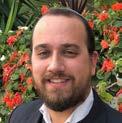
PAGE BY RABBI EZRA FRIEDMAN Director, The Gustave & Carol Jacobs Center for Kashrut Education Director, The Gustave & Carol Jacobs Center for Kashrut Education
The prohibition
According to Biblical law, food that is completely kosher and cooked by a nonJew is permitted. However, our Sages decreed that such food, even when cooked in kosher utensils, is prohibited for consumption. This prohibition is known as bishul akum. In the coming weeks we will discuss the parameters of this rabbinic prohibition, including the reasons behind the decree, when it applies, and the practical halacha for modern industrial kashrut.
As discussed in previous articles, any of the five major grains—wheat, barley, oats, rye, and spelt—that are planted after Pesach (Passover) may not be consumed or even harvested until the Korban HaOmer (Omer offering) has been brought. Since the destruction of the Beit HaMikdash and the cessation of the Omer offering, our Sages ruled that Chadash (new grain) may not be consumed until sunrise on the 17th of Nissan, the third day of Pesach. According to many authorities, this prohibition applies both to grain grown in Israel and abroad, regardless of whether the owner is Jewish or non-Jewish.
CHADASH IN ISRAEL
Food is a very connecting element in every society. That is the basis behind the decree of bishul akum. Our Sages were very concerned about close relationships with non-Jews since intermarriage is a very severe transgression. The prohibition effectively limits Jews and gentiles dining with each other, although there is no specific prohibition against dining with a non-Jew per se. (See Rashi on Avodah Zara 31:b.)
Over 90% of the wheat used to produce flour in Israel is imported. Likewise, nearly all imported finished products are made from flour produced outside of Israel. Although many halachic authorities have been lenient regarding Chadash grown overseas by nonJews, the prevailing custom in Israel is to be stringent. This stringency is based on several halachic considerations:
Forbidding the non-Jew’s cooking would be enough to create an emotional distance such that families wouldn’t marry into each other.
the halachic status of Israeli produce. Therefore, if the grain is Chadash, it is considered prohibited (see Responsa Achiezer 2:39).
• Historical Leniencies: The Taz (YD 293:4) rules that the leniencies surrounding Chadash were applicable only in cases of significant hardship, such as in Northern Europe where alternatives were scarce. In modern-day Israel, however, it is entirely feasible to establish a system that ensures the availability of Yoshon (old grain) flour.
maintain that the decree is based on this issue of closeness to non-Jews that could lead to intermarriage; this is the opinion of most early authorities. However, Rashi and others attribute a different reasoning to the prohibition of bishul akum, which is that non-Jews might mix non-kosher ingredients into the kosher food. In future articles we will discuss whether the parameters of bishul akum are based on both of these reasons or just one. However, it is clear from numerous sources that the danger of intermarriage is the main reason behind the prohibition (See Torat Habayit 3:7).
The decree is binding regardless of the reason
• Ruling of Poskim in Israel: Leading Israeli halachic authorities have not accepted the lenient customs practiced elsewhere regarding imported Chadash products (see Yalkut Yosef YD 293:10).
CHIEF RABBINATE POLICY
In accordance with these positions, the Chief Rabbinate of Israel has long maintained a policy of not certifying Chadash wheat/grains as kosher. Since the majority of flour used in Israel is imported, flour mills source their wheat from a variety of countries throughout the year to ensure that no Chadash grain is used. The Rabbinate implements a robust system of supervision at Israeli ports to guarantee that only Yoshon grain is imported year-round.
• Location of Milling: Some authorities maintain that wheat grown abroad but milled in Eretz Yisrael assumes
Rabbeinu Tam (Tosfot Avodah Zara 38:a) and Rambam (Ma’achalot Asurot 17:9)
Since the transgression of intermarriage was the primary concern behind our Sages’ decree, their goal was to powerfully discourage the possibility of developing emotional connections to non-Jews that could lead to intermarriage either in that generation or the next. Accordingly, early authorities discuss whether the prohibition of bishul akum still applies even in situations where intermarriage is not technically possible. For example, Rashba, in his responsa (1:248), examines the case of food cooked by a priest. Being that Catholic priests do not marry nor do they have children with whom to intermarry, is it permitted to eat food cooked by a priest even though the reason for bishul akum seemingly does not apply to
However, while this policy covers raw grain and flour, imported finished products present additional challenges. More than 45% of packaged foods sold in Israel are imported—from cereals and crackers
to wafers and condiments. Many of these products contain ingredients derived from the five grains. How can it be ensured that these products do not include Chadash?
The Chief Rabbinate certifies these products based on written attestations from foreign kosher certifying agencies. While this system appears sound in theory, complications arise in practice. Some foreign kashrut organizations are lenient in their approach to Chadash, and may label products as Yoshon even when halachic standards are not fully met. For instance, some organizations allow chadash ingredients to be used if they are halachically nullified (batel), a standard that would never be applied to explicitly non-kosher items like pork or shellfish. Others may label products as Yoshon without performing proper kosherization of equipment—something that is clearly required for those who are strict about Chadash.
The OU Israel Gustave & Carol Jacobs Center for Kashrut Education was created to raise awareness and educate the public in all areas of kashrut. Rabbi Ezra Friedman, Deputy Rabbinic Administrator for OU Kosher Israel is the Center's director. him? Rashba answers that we have a rule regarding rabbinic decrees: even when the reason does not apply, the prohibition still stands. This is a necessary element in every rabbinic prohibition. Otherwise, Rashba explains, people could rationalize and find reasons why any decree should not apply in their particular situation. Accordingly, Rashba concludes that even food cooked by a Catholic priest has the prohibition of bishul akum. A similar ruling is made by Ramban (Avodah Zara 35:a) regarding non-Jewish royalty who, because of their stature, are prohibited from marrying Jews. He maintains that the fact that the non-Jews are royalty is irrelevant, and that the decree of bishul akum stands regardless of the reason behind it. Taz (YD 112:1) , Shach (YD 112:4) and Pri Megadim (YD 112:1) cite these rulings as axioms of the laws of bishul akum.
Other examples

mashgichim supervise each stage, and full kosherization of facilities is performed as needed.
gentiles, even if the ingredients and utensils are kosher.
The reason cited by most authorities is the risk of intermarriage.
Even in cases with virtually no risk of intermarriage, the food is still prohibited, including non-Jewish royalty, priests, young children, and non-Jews from distant lands.
The same standards apply to Yoshon products in Israel. Products labeled as Yoshon under OU supervision in Israel undergo a meticulous verification process: No leniencies based on halachic nullification are used. Grain sourcing is carefully monitored and all production equipment is kosherized when required.
In summary, any product in Israel that carries both OU and Chief Rabbinate approval as Yoshon meets the highest halachic standards acceptable across the full spectrum of halachic opinion.

Call or Whatsapp Rabbi Friedman at 050-200-4432 Meir


ARNONA: 4-room apartment, 90m, beautifully renovated, master suite, balcony, storage, Shabbat elevator, private parking 3,250,000 NIS
Later authorities discuss similar cases where the logic behind bishul akum may not apply. Responsa Shevet Kehati (6:273) rules that even food cooked by a non-Jewish child is considered bishul akum, despite the fact that the chances of marriage seem remote. The same is true for food cooked in a faraway country where Jews cannot travel -- bishul akum still applies.
In summary:
Our Sages prohibited food cooked by
One of the cornerstones of OU Kosher is ensuring that consumers receive the level of kashrut they expect. Integrity and transparency are what make a hechsher (certification) trustworthy. A good example is Chalav Yisrael. The OU certifies dairy products as kosher even when they are not Chalav Yisrael, relying instead on the halachic status of Chalav Stam—milk from a kosher animal with no suspicion of adulteration, in countries with strict dairy regulations. However, when a market or customer demands Chalav Yisrael, the OU does not compromise, trained
BAKA: New 4 room apartment in a new building, 88m, master suite, storage, Shabbat elevator, private parking, 3,950,000 NIS
Tzitzit tying with Ruti Beit Knesset HaNassi, 24 Ussishkin no experience needed Mondays 1:15-4pm Wednesdays 12-3pm
RECHAVIA: 4-room apartment, 92m, Suka balcony, Shabbat elevator, fully accessible, private parking, storage 4,400,000 NIS
ARNONA: 5-room apartment, 120m, balcony, elevator, fully accessible, private parking, storage 4,350,000 NIS
PLEASE NOTE ADVERTISING DEADLINES UNTIL AFTER SHAVUOT:
BAKA: 5-room garden apartment, 140m, master suite, private parking, storage, full of light, airy, nice garden, 5,000,000 NIS
ISSUE #1614: Bamidbar-Shavuot (Shabbat May 30-31)
OLD KATAMON: Spacious new 5-room penthouse, 155m, terrace, great panoramic view, underfloor heating, Shabat elevator, 2 parking, + rental unit, 8,900,000 NIS
Ads by Sunday, May 25th
ISSUE #1615: Naso (Shabbat June 6-7)
Ads no later than Thursday morning (12pm), May 29th
FOR RENT: BAKA: nice 4-room apartment, 82m, beautifully renovated, master suite, air conditioners, balcony, 2nd floor, elevator - fully accessible, storage, 8,000 NIS
Ita Rochel: 02-560-9125 | ttads@ouisrael.org

BY RABBI SAM SHOR DIRECTOR, TORAH INITIATIVES, OU ISRAEL
BY RABBI SAM SHOR Program Director, OU Israel Center
The second of our two parshiyot this Shabbat, Parshat Bechukotai begins with the words:
‘Im bechukotai teleichu - If you walk in my statutes and safeguard my commandments and fulfill them, then I will provide rain at its proper time.’
Rashi, in a famous comment explains the words, Im Bechukotai Teleichu- if you walk in my statutes, to be an instruction to immerse ourselves in Torah- Shetihiyu Ameilim Batorah-to immerse oneself in the labor of Torah.
How are we to understand this insight of Rashi?
In the fifth chapter of Sefer Iyov (verse 7) we read: adam le’amel yulad....A person is born to toil/labor.
The Great Chasidic Master, the Avodat Yisrael of Koshnitz zy’a points out that the word Le’amel-lamed, ayin, mem, lamed is an acronym for the words Lilmod al menat lelamed- to study Torah, in order that we may teach it to others...”
How are we to fulfill the precept to walk in Hashem’s statutes? By delving into the Torah’s wisdom, and sharing the relevance, morality and beauty of Torah with others.
Rabbi Avraham Borenstein,the Avnei Nezer, the first Rebbe of Sokatchov, zy’a defines this experience of ameilut b’Torah, with these words from the introduction to his work Eglei Tal.
‘The essential definition of immersion in Torah, is that one needs to find fulfillment, and sweetness or pleasantness in that which
is being learned...’
Similarly, Rav Kook, zy’a, in the ninth chapter of Orot HaTorah, echoes these sentiments, and says though it is important that a person strives to achieve basic fluency and fundamental knowledge of all areas of Torah wisdom, it is important to recognize that as individuals each of our souls may be drawn more to a particular area of Torah study. True ameilut, is to find those areas of Torah wisdom that most resonate with our hearts and souls, and to let the sweetness of that wisdom permeate our entire being.
Yehi Ratzon, may each of us merit to find that chelek in the Torah HaKedosha within which our neshama may truly experience that matikut, the sweetness of Torah, and be blessed to share the sweetness of Torah with one another.
TRANSFER YOUR OLD FILM/VIDEO's (All formats) In Quality to Digital Preserve Family History from Fading Michael 052.286.8626

Photography with feeling Facebook.com/L'Dorot Photography



Starting at 349 NIS, below market rates, Includes FBAR

10% OFF for users coming via this QR code
“Turning
www.yeshezra.org
Director: Menachem Persoff

Urgently required assistance for Hachnassat Kallah with no means currently helping to support the family with two special-needs siblings.
Website: www.yeshezra.org
Bank Transfer: Mercantile (17), Branch 642, A/C 79747843
Send Asmachta for receipt
Checks: “Yesh Ezra,” POB 31476, Romema, Jerusalem
Credit Card: Sara – 077-820-0196 / 058-530-9161
Sun-Wed (10:00am-14.30 pm)
Donate with:

Tax benefit for donations as per section 46a of the Israeli tax code
Inquiries: Menachem Persoff
050-570-1067 | menpmp@gmail.com




RAM
MAGGID
The Hebrew word geulah is one of the most resonant in our national vocabulary. It illuminates the vision of historical redemption through the return of our people to their Land. As we return back to our Land, we invite the presence of malchut shamayim not only for ourselves, but for all of humanity.
Geulah is the moment for which the world has been yearning across generations. History has trembled on the brink of redemption more than once, poised for transformation. But at those fateful junctures, we faltered and geulah slipped beyond our grasp.
Surprisingly, the term geulah, in reference to historical redemption, appears only twice in the entire Torah. In Parshat Bo, Hashem announces geulah through four promises of deliverance. The third promise is יתלאגו—”I will redeem you.” Later, in Parshat Beshalach, we praise Hashem for guiding His newly redeemed nation: “תלאג
”—”In Your kindness, You led the people You redeemed.”
These are the only two moments in the entire Torah where geulah is used to describe the redemption of history.
31 BELLS OF GEULAH
Yet in Parshiyot Behar and Bechukotai, the
term geulah—or its derivatives—appears an astonishing 31 times. In these sections, the word geulah is used in a distinctly financial and commercial context, describing the restoration of land and property: land that was sold due to poverty or consecrated to the Mikdash can be reclaimed through monetary payment. This legal process is referred to as geulah—and the term is used repeatedly, more than in any other section of the Torah.
It is striking that the Torah’s most frequent use of the word geulah has nothing to do with miracles or dramatic reversals of history.
What might this teach us about historical redemption? By placing geulah in a commercial context, the Torah hints at broader lessons of geulah. Historical geulah shadows financial geulah.
The process of financial reparation must be carried out by a family member. The closest relative holds the first right to redeem the land and restore it to the family estate. If he declines, that responsibility passes to the next of kin.
Famously, this legal drama unfolded centuries later, on the day Boaz hoped to marry Rut. He and the elders waited for an anonymous and closer relative to arrive, deciding whether Boaz would have the chance to act as the go’el. Only if the unnamed closer relative refused could Boaz step forward as a go’el and complete the act of “redemption” by marrying Rut.
In truth, Boaz had no halachic obligation to
wait for the closer relative. All he wanted was to marry Rut; he had no interest in land reparation. He was wealthy and had no need for additional property. Additionally, this wasn’t a case of yibum, since Rut was a giyoret, and the laws of yibum or levirate marriage don’t apply to a former Gentile woman whose husband died before her conversion.
Still, Boaz waited. He wouldn’t marry Rut until the question of the family land was addressed. He could not start a family without first repairing the breach in the family estate by reclaiming lost lands. Since he wasn’t first in line to redeem the land, he waited for the closer relative to arrive. Only after that man declined to redeem the land did Boaz step forward—to marry Rut and restore the estate to its rightful place within the family. Redemption of land is a reinforcement of the larger family. For Boaz, it was an inseparable part of marrying Rut and rebuilding the broken family that would one day produce Dovid HaMelech. For this reason, he delayed the marriage until he was granted the right to redeem the land.
Financial geulah flows through the bonds of family. Though centered around monetary exchange, financial geulah is not merely a commercial transaction. It is an act of loyalty—of family helping family. When someone has fallen into poverty and sold their land, it is the family’s duty to step in and restore what was lost.
Alongside the 31 mentions of the term go’el in the context of land reparation, the Torah also uses the word nine times in total referring to the go’el ha-dam, in Parshat Masei and again in Parshat Shoftim. In this context, the word geulah forms the root of go’el

ha-dam—a family member entrusted with the right to avenge the negligent death of a relative. In cases of negligent manslaughter, the go’el ha-dam can pursue the killer, forcing him to flee to an Ir Miklat—a city of refuge that protects him from harm.
Once again, the act of geulah, though vastly different in tone and setting, is placed in the hands of a family member. Whether restoring land or confronting the tragedy of wrongful death, the Torah entrusts geulah to a family member—those who share blood, memory, and the capacity for common sacrifice.
The process of financial geulah is not merely about recovering property, reclaiming land, or pursuing a negligent murderer—it is about rebuilding and reaffirming the core responsibilities of family.
What holds true for financial geulah holds equally true for our national and historical geulah. Historical geulah, too, is about reconstituting ourselves as one united family. Only by restoring these bonds can we achieve redemption and wholeness.
As we return to our Land and gather Jews from across the globe, deep tensions and divisions have emerged. During the first seven decades of the State of Israel, we were held together by common enemies and a shared
narrative: the recovery from the Holocaust and the creation of a sovereign Jewish state. That shared memory unified us. We stood together.
For the past two decades, these unifying narratives began to fade; we believed we had achieved the unthinkable: independence, sovereignty, and international recognition. Cracks in our social and political fabric have deepened. The fractures once hidden beneath the surface now openly divide us.
In moments like these, it is worth remembering that redemption means rebuilding a family. Families don’t always agree; they carry differences, tensions, and struggles. Yet families endure. They forgive. They tolerate. If we seek geulah, we must recover not only land and history—but also the capacity to live together as a family, not merely as a nation. By prioritizing family ties despite our challenges, we move toward geulah—restoring connection and commitment beyond division. Historical geulah models financial geulah.
By weaving the term geulah into the fabric of restoration and reparation, the Torah reveals an additional message about historical geulah. Financial geulah takes two forms. In some cases, land sold off due to poverty is reclaimed and restored to the family estate. In more severe instances, a person may have sold themselves into slavery, lacking the means to repay their debts and regain their freedom. Here too, a family member is called upon to step in and redeem the enslaved relative through the process of financial geulah. By portraying both the financial geulah of land and the financial geulah of people, the Torah reminds us that historical geulah includes not only the resettling of land but also the reconstruction of the Jewish nation
and the revitalization of Jewish peoplehood. Settling the land of Israel is only one part of geulah. Rebuilding a nation, restoring Jewish identity in those who have seen it fade, and cultivating social and ideological harmony are just as essential. Land and people; people and land. Each is a core element of both financial geulah and historical geulah. Geulah advances on two fronts. We must settle the land but also invigorate the hearts and imaginations of the Jewish people.
Finally, the story of financial geulah offers comfort and reassurance as we navigate the long and difficult path of historical geulah. If the family relative does not redeem the land or liberate the enslaved, the Torah guarantees an automatic release and restoration. When the fiftieth year of Yovel arrives, the land returns to its original owners, and the slaves are emancipated and reunited with their families. The Torah charges family members with pursuing geulah—but if they fall short, redemption is imposed from above. One way or another, geulah will come.
This model applies to historical geulah as well. Ideally, geulah is driven by human effort and human initiative. We do our part— advancing the settlement of our Land and the reconstitution of our people. But when we falter or fall short, HaKadosh Baruch Hu will bring a divine and more enduring geulah—restoring our Land and rebuilding our people.

Rabbi Taragin’s newest sefer entitled “To be Holy but Human: Reflections upon my Rebbe, Rav Yehuda Amital (Kodesh) is now available at: mtaraginbooks.com and in bookstores
And commitment to ‘chose with Midot, day, central perthat to far always improve the congrandchildren with bring on greater

ENGLISH SPEAKING LAW FIRM
Orit Madar, Adv Family Law and Mediation Divorce, Child support, Custody Inheritance & Wills
Yariv Madar, Adv. Bodily Injuries, Medical Malpractice Civil Litigation
10 Hillel St , Jerusalem | 36 Dam hamkabim st , Modiin 02-6255592, 050-3202909
Madar@netvision net il



WE CONTINUE TO PRAY FOR THE RETURN OF ALL OUR HOSTAGES AND THE SAFETY OF OUR SOLDIERS
FEATURED PROPERTIES IN ANGLO COMMUNITIES
RBS - MISHKAFAYIM
Luxury apartment, over 250 sqm all on one level, chef’s kitchen, 4 large bedrooms. Rare opportunity. ₪12.5M / $3.52M
BEIT SHEMESH - EDEN HILLS


• Curtains & draperies
• Designer curtains
• Venetian & Woven wood blinds
• Blackout, Vertical, Roller, Roman & Pleated shades
Private house, large garden, 7 bedrooms, family house, great deal for area. ₪6.9M / $1.94M
GERMAN COLONY
Triplex, 6 bedrooms. Excellent condition. Prime location ₪9.7M / $2.73M
OLD CITY - JEWISH QUARTER
Har Habayit & kotel views! 4 bedrooms, 3 full bathrooms ₪17.5M / $4.93M
FRENCH HILL
Duplex, needs full renovation, best street in area, close to tram, shops & community center ₪6.4M / $1.8M
RAMOT BET

www.ashleywilde.co.il

Semi detached cottage, 5 bedrooms, swimming pool, facing the forest, great condition. ₪8.29M / $2.34M



BY REBBETZIN DR. ADINA SHMIDMAN
DIRECTOR, OU WOMEN’S INITIATIVE

YIRMIYAHU 16:19-17:14
In the opening pasuk of our Haftorah, Yirmiyahu offers a three-part description of the unique layers of Divine support: יזע ,הרצ םֹויב
My strength, my stronghold, and my refuge on the day of distress. The Radak explains that these terms are not synonyms, but rather describe three distinct modes of reliance on Hashem.
יזע – My strength: This refers to internal fortitude. Even before external challenges arise, it is Hashem who gives us the resilience to stand tall, the clarity to move forward, and the emotional and spiritual might to endure. The Malbim notes that this is the strength that resides within us — a kind of spiritual empowerment.
יזעמו – My stronghold: A fortress is not inside us — it surrounds us. It is the structure that protects us when the storm hits.
JESIN
Canadian Physician
Over 10,000 britot!
From Toronto, Canada, now residing in Bet Shemesh Serving Jerusalem, the Mercaz, and all places between! www.DrJesin.com | 052-399-4313

According to the Metzudat David, this term represents Hashem as our external protection, the One who shields us when threats encroach. It’s a relationship that is both personal and communal, as the fortress can house many, not just one individual.
יסונמו – My refuge: This final term represents escape. The Abarbanel emphasizes that when there is nowhere else to go, when human strategies fail, Hashem is the ultimate place of flight. He is not only our shield in times of danger, but the protective refuge we seek when our strength gives way.
Together, these three images form a framework of our trust. Hashem is with us in every layer of the struggle: strengthening us, shielding us, and sheltering us. Hashem is not only our inner strength, nor only our outer protection, nor only our last refuge — He is all three, always present, in every layer of our struggle.
In our world today, particularly in the aftermath of October 7 and the continuing pain and uncertainty, we connect deeply with the words of Yirmiyahu. We draw strength from the deep reservoirs of our emunah (יזע), we are held up by the unity and protections we build around ourselves (יזעמ), and when we feel we can run no more, we fall into the embrace of Hashem, our last and lasting refuge (יסונמ).



Jewish history and thought are full of complex topics to explore. Now is the perfect time to experience Touro’s Graduate School of Jewish Studies high-level, in-depth program, in Israel, delving into such topics as the history of Hasidism, studies in 19th-20th century biblical commentaries and more. All courses are taught by distinguished subject matter experts. Learn more at gsjs.touro.edu
All courses online only (offered by Touro University New York) Audit any course | Special reduced rates for olim
CONTACT: karen.rubin@touro.edu 212.463.0400 ext. 55581







AARON
EDITOR, TORAH TIDBITS RAV, THE JERUSALEM SHUL BAKA, JERUSALEM
The phrase ‘Jerusalem of Gold’ - Yerushalayim Shel Zahav, is well known from Naomi Shemer’s classic song “Yerushalayim Shel Zahav.” However, it is interesting to note that the phrase is first found in the Talmud in a touching story about Rabbi Akiva and his wife, Rachel. At a most challenging time in their lives a piece of jewelry, called “Jerusalem of Gold,” served as a symbol of optimism and hope.
The details of the story are as follows ( Nedarim 50a): Rabbi Akiva and his wife who had little money to support themselves slept in a storehouse of straw. Each morning Rabbi Akiva would pick out straw that had gotten stuck in his wife’s hair. Enduring these difficult conditions Rabbi Akiva turned to his beloved wife and said: “If I had the means I would place on your head a Jerusalem of Gold.” Rabbi Akiva was referring to a type of tiara or crown fashioned with the image of the outline of Jerusalem.
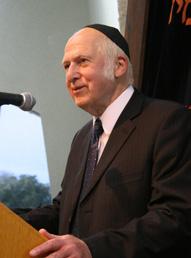
as a regular person and started calling and knocking on the door. He said to them: Give me a bit of straw, as my wife gave birth and I do not have anything on which to lay her. Rabbi Akiva said to his wife: “See this man, he does not even have straw.”
Apparently Elijah the prophet appears to them in order to uplift their spirits. Rabbi Akiva and his wife recognize their own blessings and are thankful that at least they have straw to sleep on.
Numerous lessons can be gleaned from the above story, but one key element that emerges is a lesson of determination and optimism. Rabbi Akiva envisioned better days ahead. Elijah arrived at the right time in order to instill faith and hope at a seemingly difficult hour for the struggling and destitute couple. And notably, at the center of this enchanting episode is the imagery of Jerusalem. A sparkling Jerusalem. Jerusalem, an iconic symbol for every Jew of faith, expectation and hope.
The story continues and tells of a surprise visitor they received in the storehouse. “Elijah the prophet came and appeared to them
After Akeidat Yitzchak, Avraham named the mountain where the event transpired: Hashem Yir’eh (God will be seen). Shem, the
son of Noach, called the same place Shalem. According to the Midrash (Bereshit Rabbah 56:17), Hashem combined Yir’eh and Shalem into the name Yerushalayim.
In a beautiful exposition by Rav Meir Simcha of Dvinsk in his Meshech Chochmah, he explains the meaning behind the notion of fusing name given by Shem and the name given by Avraham into one word (Meshech Chochmah, Bereshit 22:14).
Rav Meir Simcha teaches that there is a profound lesson to be found in this striking combination. Shem was in the generation of the flood, and he fed and took care of all the creatures on Noach’s ark. His focus was to improve the middot and actions of the people and creatures that had contributed to Hashem’s decision to bring the flood. He called the place Shalem, complete, indicating that all people must live ethically and contribute positively to the welfare of mankind.
The counterpoint to the name Shalem is Avraham’s emphasis on knowledge and service of Hashem. Avraham underscored the relationship of man and Hashem and the submission to Hashem’s will. Thus, Yerushalayim represents the combination of both facets. Namely the ethical and moral teachings which are to be embraced by all mankind and the particularistic religious life that is the hallmark of the Jew.
experience His immanence. Second, it is the headquarters of wisdom and light that must be shared with all people across the globe. According to Rav Kook, the following well known verse describing Yerushalayim, highlights these two dimensions: “For Torah will go forth out of Tzion, and God’s words from Yerushalayim” (Isaiah 2:3). What is the difference between Tzion and Yerushalayim?
The word Tzion literally means “marked” or “distinctive.” It refers to those inner qualities that distinguish the Jewish people with their own unique spiritual traits and aspirations.The name Yerushalayim, on the other hand, indicates the city’s role as a spiritual center for the entire world, influencing the nations. “Yerushalayim” is the means by which Israel’s spirit of holiness penetrates and uplifts the lives of distant peoples.
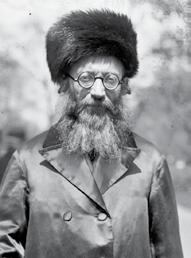
The term Tzion is reserved for the inner quality of the city, for its imposing majesty, and its fortress-like qualities. The term “Yerushalayim” refers to the city’s capacity to radiate outward as a beacon of light to all humanity; indeed, to attract all of humanity to visit her and worship in her Holy Temple. Tzion represents our nation’s autonomy and special strength, while Yerushalayim symbolizes the dissemination of dvar Hashem, the Almighty’s word, to all mankind. (Ain Aya vol. 2, Berachot 63b,[9:330])
Rav Kook, in his exquisite fashion, delineated two distinctive roles which distinguish Yerushalayim. First, it is the chief city for the Jewish people to serve the Almighty and
“The voice of sweet hope that accompanies us twice a year - on the holy eve of Pesach and the conclusion of Yom Kippur - this is the voice of our nation’s soul, as it articulates the
depths of its yearnings, longing, and anticipation: “Next Year in Yerushalayim!” (Mo’adei HaRe’iyah, p. 463)
In this beautiful passage above, Rav Kook portrays the two spiritually elevated moments in the year when the Jew offers heartfelt prayers for Yerushalayim. Indeed, these sacred junctures represent auspicious times when our ardent hopes and ambitions are most fervent and pronounced.
As the solemn day of Yom Kippur comes to a close, the Jewish nation is purified from sin and a sense of renewal and rebirth for the entire nation is powerfully discerned. In a similar vein, Pesach celebrates not only a past redemption from Egypt but the promise of a final redemption, together with all mankind. On both occasions we yearn for the realization of the loftiest of blessings and the visions which are rooted in the Holy City, the city of hope and salvation. “Next year in Jerusalem” is a prayer for nothing less than universal redemption.
When Yaakov wakes up from his prophetic dream, which he experiences on what will become the Temple Mount, he immediately senses that he is standing in a place of exalted sanctity. He exclaimed: “This is the house
of God and this is the gate of heaven.” He described the distinctiveness of the place in two ways: it being a house and a gate.
The great gaon, Rav Aharon Lichtenstein zt”l, explained that a house and a gate serve two different functions. A house is where one feels settled and secure; one has reached their destination. A gate, on the other hand, is where a person enters and passes through to reach a certain point.
Yerushalayim is our home. It is where one feels spiritual serenity, and where one naturally imbibes the sweetness of being in the presence of the Creator. And yet, Yerushalayim is also comparable to a sha’ar, a gate, because the Holy City represents the capacity of a person to continually enter a higher domain. Yerushalayim exemplifies the notion that a Jew is never satisfied spiritually. The very moment one reaches an elevated level, he/she is quickly motivated to reach the next echelon. (YUTorah, Rabbi Shalom Rosner, Yom Yerushalayim)

Rabbi Goldscheider’s most recent OU Press Publication, “Torah United” on the weekly Parsha, can be ordered directly from Rabbi Goldscheider at aarong@ouisrael.org at a special price for Torah Tidbits readers.

Do you have a life insurance policy you:
• No longer want?
• No longer need?
• Can no longer afford the premium?
• Could you use extra money instead of keeping your policy?
I can guarantee that if you qualify with the underwriting process I can get you more money than if you cash it in with the company.
Please contact Moshe Russell at: Buymypolicy32@gmail.com
Walking down King George St. in Jerusalem and want a cold bottle of water?
Come help yourself to a bottle at 52 King George.
In loving memory of Yoni’s wife Tziporah a"h, a true Eishes Chayil, always full of chessed, kindness and laughter, and brought life and strength to so many people, that she touched! She was like Aron, who loved peace and pursued peace.

Yoni thanks Hashem for having the opportunity of having Tziporah in his life, to learn of her caring, patience and happiness, to overcome her challenges. May Tziporah's Neshama be a light onto the world, in a time of darkness, and may her Neshama shine to Gan Eden. Yoni misses Tziporah with tears in his eyes, as Hashem gave him a gift, a crown jewel, now he returns her to Hashem. With thanks and Toda. Love, Yoni
To help refill the supplysend tax deductible donations for Be’er Tziporah a"h Bottled Water Gemach to Chabad of RechaviaRabbi Yisroel Goldberg email Rabbi@JerusalemChabad.org 02 800-1717
www.JerusalermChabad.org/DonateShekels





RAV DANIEL MANN
Rav Daniel Mann
Question: I learned that one should leave bread on the table until Birkat Hamazon, but at most, I see this done on Shabbat. Should I be careful to do so also during the week?
Answer: This practice comes from the gemara (Sanhedrin 92a), which says that one needs to leave bread on the table if he wants to have blessing. The Shulchan Aruch (Orach Chayim 180:1-2) brings this idea and also writes in more halachic language not to remove the bread until after Birkat Hamazon. Several reasons are given (see Mishna Berura 180:1-2). Most of them focus on bentching, which perhaps explains why the concept only appears regarding bread. The Zohar is quoted as saying that in order for Birkat Hamazon to leave blessing, there must be something left on which the blessing can take hold and then “expand.” (Along the mystical



side of Birkat Hamazon, the Kaf Hachayim recommends keeping salt on the table during Birkat Hamazon, so the table will resemble a mizbe’ach.) The Levush (ad loc. 1-2) explains that it is proper for it to be evident what one is thanking Hashem for, and also to show that he had more than enough to eat. The one explanation that focuses on the meal itself comes from Rashi (on the gemara) – we want there to be food left to give a poor person. One difference between the reasons relates to the size of the piece. According to Rashi, it should be considerable (Sha’ar Hatziyun 180:3). Rashi’s explanation does not seem relevant nowadays, so Az Nidberu (XI:46) says that where it is uncommon for a poor person to come (we add – if he comes, we will not give him leftover bread), one does not have to leave a nice-sized piece. Another difference is that according to the others, the bread does not need to be on the table while eating, but can be removed and returned for bentching.
Why indeed do many not follow this practice, especially during the week? Yalkut Yosef (OC 180:(1)) says that since poor people are not an issue, any leftover is enough, including crumbs, and presumably there are always crumbs. It is difficult, though, to assume that the other elements can be accomplished with inadvertent, tiny leftover bread, and
Eretz Hemdah, the Institute for Advanced Jewish Studies, Jerusalem, is headed by Rav Yosef Carmel and Rav Moshe Ehrenreich, founded by Rav Shaul Yisraeli, zt”l, to prepare rabbanim and dayanim to serve the National Religious community in the Israel and abroad. Ask the Rabbi is a joint venture of the OU, Eretz Hemdah, and OU Israel’s Torah Tidbits. the classical sources who say to leave bread also do not seem to assume this.
I heard third hand in the name of an important talmid chacham that he does not follow this practice because in our days, it will likely cause one to waste or even disgrace the bread (see Shulchan Aruch ibid. 3-4). Again, the question is: what changed that this should be a problem, when the gemara and poskim were not concerned?
It is possible that the different usage of bread in our days has played a role. It is clear from many sources (including Shulchan Aruch, Yoreh Deah 89:4) that traditionally, one would bring a loaf of bread to the table and cut off pieces as needed. (The concept of “sliced bread” is a 20th century innovation.) The normal thing, then, is for there to be bread left over from the loaf at the end of the meal, and then the practice is not to remove it before bentching. Now, it is more common for people, if they eat bread at all at a weekday meal, to bring the number of slices they want. Therefore, arguably, it is less common for there to be leftover pieces, and people have less of an idea what to do with them.
It is difficult to know whether this practice is a full-fledged halachic obligation or a recommended minhag linked to the prospect of beracha (see Yalkut Yosef ibid.). It is also difficult to know how to deal with a situation in which there is lack of adherence to such a codified practice – was there logic to its suspension or was it a case of a not famous
of an army encampment, there is another layer of meaning. Yes, regimented. Specific. Detailed. Organized. But an army for which purpose? To fight the anticipated foes in the Land of Israel? Or to be the army of Hashem? A fighting army with its G-d in its midst? Or both?

halacha just being forgotten or ignored, especially under changed settings?
If one has a loaf or extra slices on the table, we recommend keeping some there until bentching or returning leftovers for bentching (but not a full loaf – see gemara ibid). If he just brought a roll or sandwiches to the table, it is hard to know whether to recommend bringing bread just to have for bentching, especially when not eating at one’s own table (see Yalkut Yosef ibid.).
4th aliya (3:1-13) Aharon’s sons’ names were Nadav, Avihu, Elazar and Itamar. Nadav and Avihu died without children. Elazar and Itamar serve as Kohanim with Aharon. Take the Leviim: they are to serve Aharon. The Leviim are responsible for the Mishkan: to support the Kohanim and the people, to facilitate the running of the Mishkan. The Leviim shall take the place of the first-born, who became obligated to me when saved in Egypt.

For a Din Torah in English or Hebrew contact: Eretz Hemdah–Gazit Rabbinical Court 077-215-8-215 • Fax: (02) 537-9626 beitdin@eretzhemdah.org
There are 2 groups mentioned here: Kohanim and Leviim. The lineage of the Kohanim is given. It just doesn’t take much room. Because Aharon is a Kohen and his sons. But he only has 2. So the entire lineage of the Kohanim is 3 people. The Leviim, on the other hand, are an entire tribe,
Every person who was not born in Israel and lives in the Holy Land should celebrate his/her ALIYANNIVERSARY annually! REMEMBER! WITH ALIYAH BLESSINGS! The NEAMANS
14 TORAH TIDBITS 1516 / BAMIDBAR and from camp was curtains 8,600, responsible Table, camping structure ports Levi the ilies had 3 of the The on Gershon, responsibility fell furniture. care the And replace
For Rent in a brand new building on Mekor Chaim 2, 3 and 4 room apartments starting at 5300nis for a 2 room. Brand New Building on Mekor Chaim Recently finished, 4 rooms, 111m, mirpeset, storage, parking, Shabbat elevator, 3rd floor, 4.4m shekel
Great opportunity to buy in a new building starting construction in Arnona close to Baka. Great prices and the price isn't linked to inflation! Starting at 2.55m shekel.
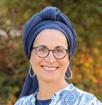
TORAH TIDBITS CONTRIBUTOR
There is a shul in Krakow called “The Tempel Synagogue.” It was built in the 1860’s by Jews who felt a strong gratitude to Poland and the opportunities afforded them there. They wanted a shul that would reflect their financial status and lifestyle.
The shul is visually stunning: regal and beautiful, decorated with intricate designs and stained glass with a golden structure over the Aron Kodesh harkening to the Beit HaMikdash. These Jews believed that Poland was the “New Jerusalem”, and their shul was the physical manifestation of that very controversial idea.
How the cisterns have dried
The market-place is empty
And no one frequents the Temple Mount
In the Old City.
But 3 weeks later, the 6-Day War broke out resulting in the reunification of Jerusalem.
Naomi Shemer rewrote this verse to celebrate the joyous reunion:

Last Shabbos, I was at the Tempel with a group of women from NY and the song that flashed through my heart was “Yerushalayim Shel Zahav.” (Jerusalem of Gold)
So that’s what we sang.
“Yerushalayim Shel Zahav” always gives me chills. I love the story behind the song: that Naomi Shemer wrote it for a music festival in May 1967, when Jerusalem was still divided and held captive by Jordan. The verses of the song reflected that heartbreaking reality:
We have returned to the cisterns
To the market and to the squares
A Shofar calls out on the Temple Mount
In the Old City.
As I stood there in the Tempel, I thought about the Jews who built it and wondered at their miscalculation. How could they ever think that Krakow could replace Yerushalayim?
Or maybe this shul was really an attempt to heal their broken hearts? After all, it seemed inconceivable in 1861 that the Jewish People would once again have full access to our holiest city. That we would be able to daven by the Kotel, walk the golden pathways of Jerusalem or live within her walls. We have yearned for this privilege for thousands of years and, I
imagine, there were times in history when the longing was just too overwhelming, and the community decided to “make Jerusalem here,”…wherever that might be.
But Jerusalem is more than a city.
The phrase “Yerushalayim Shel Zahav,” can also be a reference to a Jerusalem-shaped gold tiara mentioned in the story of Rabbi Akiva and his wife, Rachel. When they married and he was a poor shepherd with no learning yet, they slept in a barn. The Gemara (Nedarim 50) relates that Rabbi Akiva used to pick the pieces of hay out of Rachel’s hair, wistfully wishing he had the means to give her a “Yerushalayim Shel Zahav” instead.
I imagine his yearning was not just for a piece of jewelry, but for what that particular piece represented- a world that was healed, a world with the Beis HaMikdash, a world in which we would live with clarity rather than uncertainty.
Yerushalayim is the headquarters of that world and our yearning for it.
May Hashem bless us to understand the incredible privilege we have to walk the holy streets of our Golden City and to hold the heartbreaking reality that she is still not really whole. May the cumulative energy of billions of tefillot from millions of Jews over thousands of years help push us to keep holding on. And may the physical world very soon reflect the true nature of Yerushalayim as the place where we meet Hashem “face to face” and see with eyes of clarity.
Shoshana teaches Chassidus for the Shirat David Community in Efrat as well as in Jerusalem for Midreshet Rachel v’Chaya and Shiviti Women’s Institute. She is a guide in Poland with JRoots and co-leads inspirational trips to Ukraine and around Eretz Yisroel. Shoshana has also been a guide at Yad Vashem since 2014.

Tikkun Leil Shavuot In Yemin Moshe
June 1, 2025
11:00-11:45
Rabbi Dr. Richie (Shmuel) Lewis
The Brit of Oral Torah: Forgetting and Remembering.
11:45-12:20
Sean Casper "Femme Fatale"
12:20-1:00
Rabbi Dr. Neri Ariel _ Editor of Journal Theoretical Inquiries of Law
1:00-1:40
Rav Chanoch Yeres
Rav, Beit Knesset Beit Yisrael
Antisemitism: The Problem and Solution
8:15

Eight years ago my husband and I spent a Sabbatical year in Israel – three years before our Aliyah. With children living in Israel, for many years we came to Israel several times a year, but never had we been in Israel – in Yerushalayim – for Yom Yerushalayim. Like many, we were thrilled to be able to daven at the Kotel on the twenty-eighth day of Iyar, the anniversary of the day that the Kotel was liberated.
It is my habit to say the “Tehillim Chodshi,” to finish the Book of Psalms every thirty days by saying the chapters set aside for each day of the Jewish month. And so – what better time to say my Tehillim for day 28 of Iyar than at the Kotel on Yom Yerushalayim. Sometimes, we find G-d touching us gently on the shoulder in the midst of a “normal” day. That’s how I felt as I reached Tehillim 137 on that “Day 28.” There I was on Yom Yerushalayim reading the words “Yom Yerushalayim” (verse 7) and the haunting verses “Im eshkachaich Yerushalayim” - “ If I forget thee O Jerusalem” (verse 5) that we all know by heart. A quick search online tells us that the scholar who divided Tehillim into days of the month was the 14th century Rabbi Menachem ben Zerach of Navarre, Spain, a student of Rabbi Yehuda – son of the Rosh. And although the article that discusses this
fact, reminds us that there are some differences between Rabbi Menachem’s division of Tehillim and our own, Day 28 always included chapter 137.
Centuries ago, perhaps millennia ago, even before the destruction of the Batei HaMikdash, it was determined that one day we would be standing at the redeemed Western Wall and reciting these words on the very day that commemorates the redemption of the City of Jerusalem.
Our captors urged us “Shiru lanu m’shir Tzion” – “Sing to US the songs of Zion” (verse 3) while we lived as strangers in their lands. Some commentaries say that this “Shiru lanu m’shir Tzion” was a taunting by the enemy. “For there [in Babylon] our captors had asked us for songs, our tormentors called for merriment: ‘Sing to us one of the songs of Zion.’” “V’tolalenu simcha” – Those who jeered at us told us to rejoice, (the word “tolalenu” from holelut meaning “jeering”). For a moment we can hear the Nazis tormenting their victims – “Why don’t you sing your songs of Zion NOW……?” or asking the musicians among us (like the Levites of ancient times) to entertain the Nazi officers, or the Jews, as they marched to their deaths.
Some commentaries speak of the wealth and luxury that we enjoyed in Babylon and other lands of our exiles, and suggest that our “hosts” felt that we should sing with pride the anthems of the countries we lived in as citizens. “Sing to US the kinds of patriotic song you sang in Zion. Afterall, your life is so good here.” How many national anthems have we
Jews memorized over the centuries?
And we respond: “How can we sing the songs of Hashem, the songs of holiness, on a foreign land?” (verse 4) And that response applies to the countries we suffered in as well as to the countries (like Babylon itself) that we thrived in.
We ask Hashem “to remember against the Edomites “Yom Yerushalayim” – the day when Yerushalayim fell and how they cried ‘lay it bare, lay it bare, to its very foundations.” (verse 7)
And here my heart skips a beat. Wait, “Yom Yerushalayim”? From the time this chapter of Tehillim was written, until our times– 1967fifty-eight years ago, these words had only one meaning: “Yom Yerushalayim” meant destruction. For thousands upon thousands of years. And yet for us and our children, we know only another meaning: “Yom Yerushalayim” means only celebration – only a return to Zion. Fifty-eight years have wiped out thousands of years – even though the Beit HaMikdash has yet to be rebuilt.
And there I was at the Kotel eight years ago experiencing all this. After a career of teaching Halacha, I thought - we are the first people in 2000 years, since the completion of the Mishna, to testify that the center of Torah study is Eretz Yisrael – not Bavel, not Egypt, not Spain, not Germany, not Eastern Europe, not the United States. Eretz Yisrael. Truly miraculous times.
Yom Yerushalayim. Two words transplanted from a time of destruction have come to mean the beginning of redemption – and we are the witnesses, in real time.
Yom Yerushalayim.
May we be zocheh, as well, to see the rebuilding of the Beit HaMikdash.
Abby Lerner serves as the first national director of conversion services for GPS (Geirus Policies and Standards), the network of conversion courts established in 2008 to serve communities throughout North America. In this role, Rebbetzin Lerner supports candidates through the process of conversion, answering questions, addressing concerns, and acting as a liaison to the batei din. The Rabbinical Council of America (RCA) oversees the batei din and sets standards for the more-than-200 Orthodox conversions that take place every year in the United States. Prior to this position, Rebbetzin Lerner taught limudei kodesh at Yeshiva University High School for Girls in Queens, NY, for nearly three decades. She formally served as the rebbetzin of the Young Israel of Great Neck, NY, for more than four decades. She and her husband made Aliyah to Jerusalem in September of 2020.

BOUSTAN BAKA - Boutique building, quiet & pastoral, 4 spacious rooms, Succah balcony, Shabbat elevator, parking.
6.990.000 NIS MICHAEL 052-3202488
In the heart of calm and pastoral BAKAPrivate arab house, 6 rooms, 500m + possibility of building 250m, huge garden, approx. 700m, completely renovated, underfloor heating + a/c, large parking, 5 bathrooms, 5 toilets, green
MENDEL 0528980111
CITY CENTER - 2 rooms, Savyon view, luxurious, furnished, Shabbat elevator, concierge
2.890.000NIS MENDEL 052-8980111
BAKA - New penthouse, 4 rooms in a small luxurious building with character, alone upstairs, 3rd floor + elevator, 4 orientations, 3 toilets, 2 bathrooms, terrace / sukkah, 70m, parking, store-room
BAKA - 2 apartments sit ontop of each other, 5/3 rooms + studio, separate entrance, balconies
5450000 NIS MENDEL 052-8980111
9.800.000 NIS MICHAEL 052-3202488
MEKOR CHAIM - Beginning of the street, spacious 4 rooms, Succah porch, parking, storeroom
4.850.000 NIS MICHAEL 052-3202488
MOSHAVA / In a building after TAMA 38, new apartment, 4 rooms, 3rd floor + elevator, balcony/partial sukah, opened sight, 2 bathrooms, calm, parking
MENDEL 052-8980111
GERMAN COLONY - Garden apartment, 110m + 370m garden, storeroom, parking
8.500.000 NIS MENDEL 052-8980111
BAKA / MEKOR HAIM - 4 rooms, 90m, 2nd floor + elevator, completely renovated, fireplace, a/c, gas heating, very central, close to all amenities
MENDEL 052-8980111
Shabbat afternoon
Near Arnona Hatzaira, in a step building, very large 5-room apartment + balcony/sukkah, 40m, renovated, 3rd floor, private entrance, quiet, potential for extra independent unit
Parshat HaShavua shiur given by Rabbi Chanoch Yeres at Beit Knesset Ohel Yitzchak, Rechov Washington 12 at 5:30 pm
MICHAEL 052-3202488
ARNONA – 3 rooms, that will be transformed to 90m, 3rd floor with elevator, store-room, parking
ONLY 2550000 NIS
MICHAEL 052-3202488








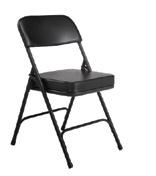











I love Jerusalem.
It is my city. I was born and raised here and still live in the heart of it.
Jerusalem is not a regular city. It’s the center of the world. The place Hashem chose to dwell—chose to make His home, which b’ezrat Hashem, will soon be rebuilt.
There’s something about Jerusalem that defies explanation. You feel it when you walk through her ancient streets, when you watch the sun set over her golden rooftops, and most of all—when you sing about her.
Because Jerusalem is not just a city. She is a song.
I once heard something beautiful: in Hebrew, the word shir—song—shares a root with sharsheret, meaning chain. (I love Hebrew!) A song, like a chain, pulls you, lifts you, takes you on a journey.
A true song binds things together—emotions, people, moments in time.
And that’s what Jerusalem does.
She connects.
She holds the Jewish people together like links in a sacred melody.
This is the meaning behind the verse in Tehillim:
“
“Jerusalem, built like a city that is joined together.”
The Midrash teaches that this is not just
about physical connection, but spiritual unity. Jerusalem binds hearts. She is the sharsheret at the center of our collective shira.
These days, more than ever, we feel how music brings people together. I see it clearly in the Hallel gatherings I lead for women every Rosh Chodesh—hundreds join in prayer and song, voices rising as one. Women of all backgrounds. Different stories, one heart. In those moments, something holy happens.
Music melts barriers. It reminds us who we are: one people, one soul.
Just like Torah.
Our sages call Torah shira—a song. Because Torah isn’t just wisdom. It’s a living force that links generations. It brings families together around a Shabbat table. It unites communities. It binds the Jewish people across continents and time.
And one day soon, b’ezrat Hashem, it will unite the whole world.
And at the center of that dream is Jerusalem.
From the days of the Beit HaMikdash, Jerusalem was the source of sacred song. The Levites sang daily on the Temple steps, lifting prayers into the sky. It wasn’t just beautiful— it was holy. Music was part of the service. A way to reach God, and each other.
Jerusalem is still that place. A city where longing and joy live side by side. A city that
doesn’t just stand—she sings.
And in the midst of all the pain we are feeling today, I still hear her song.
A song of hope.
A song of chessed. A song of strength.
And I believe with all my heart: this song will only grow louder. Until we hear it rise once again from the Temple Mount.
Until we see the world join in harmony. Until the gates of Jerusalem open wide— and her melody embraces all of humanity.
Because Jerusalem is not just the source. She is the future.

2,790,000


overly opinionated or bring stress, it’s okay to lovingly set boundaries.
Lori asks:
There are so many people involved in supporting someone on their dating journey - family, friends, shadchans, dating coaches, and more. Can you help clarify what kind of support each of them is best suited to offer, and when a dater should turn to each one?
Aleeza Answers:
Great question, Lori. Dating is one of the most emotionally layered journeys we go through - and you’re right, it takes a village. But not every villager plays the same role. Let’s break it down:
Your family is your foundation. Often, they remind you who you are and what you value most. They might not know all the “dating rules,” but as long as you have a healthy relationship they know you. Lean on them for emotional support, encouragement, and grounding - especially when you’re feeling lost or unsure. But remember: sometimes family can be a little too close. If they’re
A small Sefer Torah with its own Aron Kodesh is available to shiva houses or for any other necessary occasion on a temporary free-loan basis. If needed call Uri Hirsch: 0545513173
Think of your friends as cheerleaders. It’s ideal they remind you to stay hopeful and positive as you navigate this process. Friends are great for pep talks, outfit approvals, and especially great when it’s time to celebrate. But don’t confuse their support with strategy, they care, but they’re not always trained to guide.
This is your dating connector. A shadchan helps find you potential matches and keeps things moving forward emotionally and logistically. They are there to add support as needed. Be respectful of their time, keep them updated, and treat them as a partner in the process. They may also offer guidance or refer out if it’s beyond their knowledge base DATING
When you need clarity, skills, or mindset work - this is who you call. A good dating coach helps you understand your patterns, improve communication, and build confidence. They help you dig deep and stay focused. If you feel stuck, confused, or want to date more intentionally, this is the support to seek.
Each person brings something unique. The key is knowing who to go to for what - and not expecting one person to do it all. And sometimes, the best thing you can do is ask yourself: What kind of support do I need
right now?
You don’t have to walk this journey alone. You just need the right people walking beside you.
Want to set up your friends? Become their ambassadorjoin Shagririm Balev!




Founded in Israel in 2019 and led by Rav Rimon, Shagririm Balev - a social online matchmaking initiative - has taken the dating scene by storm. With over 10,000 candidates and 3,000 Ambassadors, in Israel and the US, Shagririm Balev is averaging a Wedding every 2 days! en.shagririm.org.il 0585323242

Spacious 4 room apartment on the unique and desirable Kurtz St.! 117 SQM, An amazing open view, Balcony (partial Sukkah), beautiful kitchen, A/C, Machsan, & Private parking, Asking price: 4,830,000 NIS
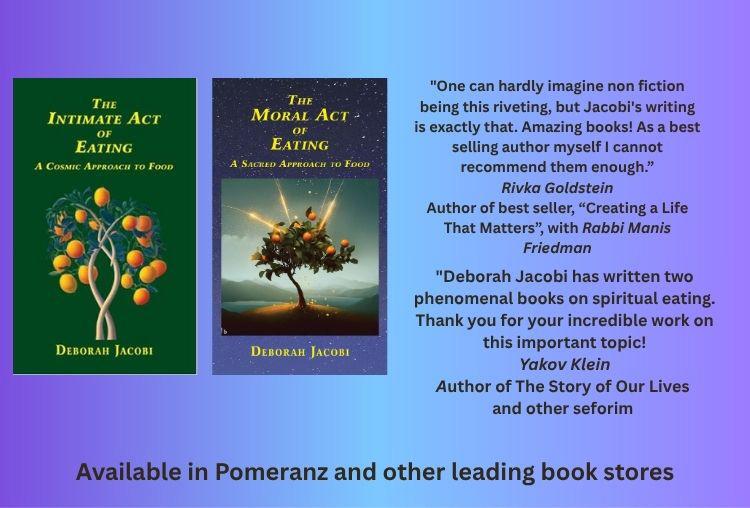




This Dvar Torah was developed from a chavrutah between Elchanan Perez, Yachad Beit Shemesh Chapter advisor and AviNoam Vaknin, Yachad Beit Shemesh Chapter participant.
“Choice, Faith, and Responsibility for the Land – A Message for Our Times”
Our double Torah portion, Behar-Bechukotai, deals with deep themes of responsibility, faith, and our connection to the Land of Israel.
In Parashat Behar, the Torah commands the mitzvah of Shmita – the sabbatical year, in which the land must rest:
But when we live with responsibility and belief, God grants us the Land with security, blessing, and peace.
How is this relevant to us today, during a time of war?
At this very moment, when our hold on the Land is being challenged – both from outside and within – the Torah calls to us:
Don’t forget: this Land is a gift, but it comes with responsibility.
It requires unity, humility, commitment, and moral strength – and only through that can we truly merit to “dwell securely” in it.
This isn’t just a national message – it’s personal.
This message is powerful: the Land doesn’t “belong” to us in the material sense – it is a trust from God.
When a person lets the land rest during Shmita, they declare, with complete faith:
“I trust in God – not in my bank account.”
This idea connects beautifully with Parashat Bechukotai, where the Torah promises:
And warns:
What’s the connection?
If we aren’t willing to pause, let go, trust, and live with faith – we may lose even what we think we own.
Each of us, in our own way, is called to rise: to choose courage over despair, values over fear, and responsibility over indifference.
Even in the face of doubt, pain, and darkness – we must remember:
ץראה יל־יכַ – this Land is part of our eternal covenant with God.
And we are never truly alone.
Our victory is not measured only by territory – but by our faith, our values, and the daily choice to walk in His statutes.
Just as in the past – so too today:
Even if we pass through darkness, we will see light again.
Because God is with us – and the Land is waiting for us to rise, not only to defend it, but to live by the values that make it truly ours.
Not Sure About Where or How To Buy?
Contact me for a Free Zoom Consult
IL:
Netanya- Close To Ir Yamim - Limited Time Offer
Select 2, 3, 4, Bedroom Apartments Completing June 2027
Great Pricing with NO INDEX + ONLY 10% At Closing
Builder Offering 1M NIS mortgage - 20 years - 2.49%
Balance + 1st mortgage payment at Keys
PENTHOUSE - CALL FOR SPECIAL PRICING BY MAY 31.
Jerusalem:
Talpiot New - 3 Bedrooms - 3.58M NIS
Arnona New - 4 Bedrooms - 4.7M NIS*
Mekor Chaim - Luxury Apts - From 3.6M NIS*
Haifa : New Project - Close To Beach / Sea
New - 2 Bedrooms - Starting From 2.2M NIS / $597K USD
New - 3 Bedrooms - Starting From 2.64M NIS / $716K USD
New - 4 Bedrooms - Starting From 3.0M NIS / $814K USD
Rehovot:
4 Bedrooms - Close to Berman Shul - 3.2M NIS
4 Bedrooms + Roof rights - Near Berman & Weizmann - 2.8M


EFRAT - LUXURY VILLAS - NEW DEVELOPMENT IN TE’ENAH
177 sqm homes + 157sqm yard + 11 sqm porch - From 4.5M NIS
EFRAT - NEW PROJECT IN ZAYIT -

90 sqm - 2M NIS, 110 sqm - 2 3M NIS, 130 sqm - 2 5M NIS
North Netanya
Upscale duplexes and triplexes - elevator and pool included
Tel Aviv : NEW
Ben Yehuda St. - 3 Bedrooms From 5.9M NIS*
Yarkon Park - 2 Bedrooms From 4.99M NIS*
Jabotinsky St. - 3 Bedrooms - From 4.99M NIS*
Nahariya: NEW Hi-Rise PROJECT - LAST UNITS
4 Bedrooms - From 1.92M NIS*
Luxury High Rise - First Line to Sea - Call For Details
Nahariya : Boutique Building - Quiet Street - Close To Sea
100 meters to Beach - Finishing in 1 year
4 Bedrooms - 2.95M NIS / $800k USD We Offer Free Home Inspections**
Learn online with international Tanakh experts from Herzog College in Israel
Study in your own time plus join a two-week semester in Israel in July 2026 for Tanakh & Archaeology courses
Courses include Sefer Shemot, David HaMelech, Yechezkel, Shivat Tzion, Hassidut, Parshanut, Ethics & Morals, Intrinsic Motivation, and Student-Centered Learning
Earn an M.A. in 2 years at a special low price

Find out more at https://global.herzog.ac.il/masters Deadline for applications: August 31st, 2025

Expert teaching faculty includes:











BY ZACH BROWN
2nd year student at Reichman University
When I was asked to share a Dvar Torah this week, my mind immediately went back to last July, when my brother Benji was injured by rocket shrapnel while on his base near Lebanon. In that instant, everything changed. It felt like the whole world paused –daily routines and small concerns fell away, replaced by a single focus: his recovery. It was a moment that forced us to step back, to rethink what truly matters, and to put our faith in something greater. It made me think of the mitzvah of Shemittah, which opens Parshat Behar.
a reminder that our strength isn’t just in what we can control, but in the bonds we share and the support we give each other.

Shemittah is a radical concept – every seven years, the Land of Israel is commanded to rest. Fields lie fallow, debts are forgiven, and the usual rhythms of life are disrupted. It’s a forced pause, a moment of surrender, and a deep exercise in trust – trust in the Land, trust in Hashem, and trust in each other. It’s
In the days and weeks after Benji’s injury, I saw this trust come to life. People reached out with prayers, meals, and encouragement. Strangers sent messages, friends showed up unannounced, and an entire community came together to support us. It was like a real-life Shemittah – a moment when people paused their own lives to be there for someone else, believing that their own needs would still be met. This idea of interconnectedness and shared responsibility is deeply rooted in the teachings of Rav Kook, one of Benji’s favorite thinkers. Rav Kook often spoke about the unity of the Jewish people and the power of shared purpose. He wrote, “The purely righteous do not complain about darkness, but add light. They do not complain about evil, but add justice. They do not complain about heresy, but add faith.” In other words, when faced with darkness, our response should be to add light – to strengthen the bonds that connect us and to walk forward together. This ties directly into Parshat Bechukotai, which follows Behar. It begins with the words, “If you walk in My statutes…” (Leviticus 26:3). Notice it says “walk” – not just keep or follow, but actively move. It’s a call to action, a
reminder that living a meaningful life means constantly moving forward, even when the path is uncertain. It’s about not just surviving the tough times, but finding ways to keep building, keep supporting, and keep walking together.
Benji, with his incredible determination, is continuing on his path to 200% in his rehab. Like Rav Kook teaches, it’s about adding light, not just avoiding darkness. It’s about moving forward, no matter how steep the climb, and inspiring those around you to do the same. So when you do something good, when you choose to add a bit of light to the world, have הנח
in mind.
Shabbat
Shalom.
JLIC’s mission is to create a movement of vibrant Jewish life among emerging adults aged 18 to 30 through transformative leadership development, innovative educational programming, and meaningful engagement opportunities. We empower the next generation of leaders who will inspire and strengthen the Jewish community worldwide. In Israel, JLIC is creating and nurturing vibrant religious communities to support English-speaking college students and young professionals, and is currently active in 10 communities. To learn more, visit us at oujlic.org/Israel
Zach Brown is originally from Toronto. He now lives with his wife in Herzliya . He thanks the Herzliya community: “I have been surrounded by the best community as Benji continues to rock it in rehab.”


For Sale in Jerusalem
Ramot B: * 8 room cottage, 170m 4.900,000 NIS
For Sale in Efrat
Zayit: * 200m cottage, next to Shirat David. 6,500,000 NIS
Zayit: * 4 room apt. next to the mall. 2,650,000 NIS
Zayit: * 3.5 room apt. Stunning view. 2.250.000 NIS
Dekel: * Semi attached home. 180m, 6 rooms + option 4.190.000 NIS
Dagan: * 200m, 8 room cottage. Great location! 5,690,000 NIS
Gabi- 0524588716
Travel
1UniTravel - Medical Insurance at great prices Choose from multiple options 1unitravel.brokersnexus.com 1UniSim - Sims for USA and Worldwide Starting at $40 sales@1unisim.com Call 077-400-3199 or USA 718-715-0001


